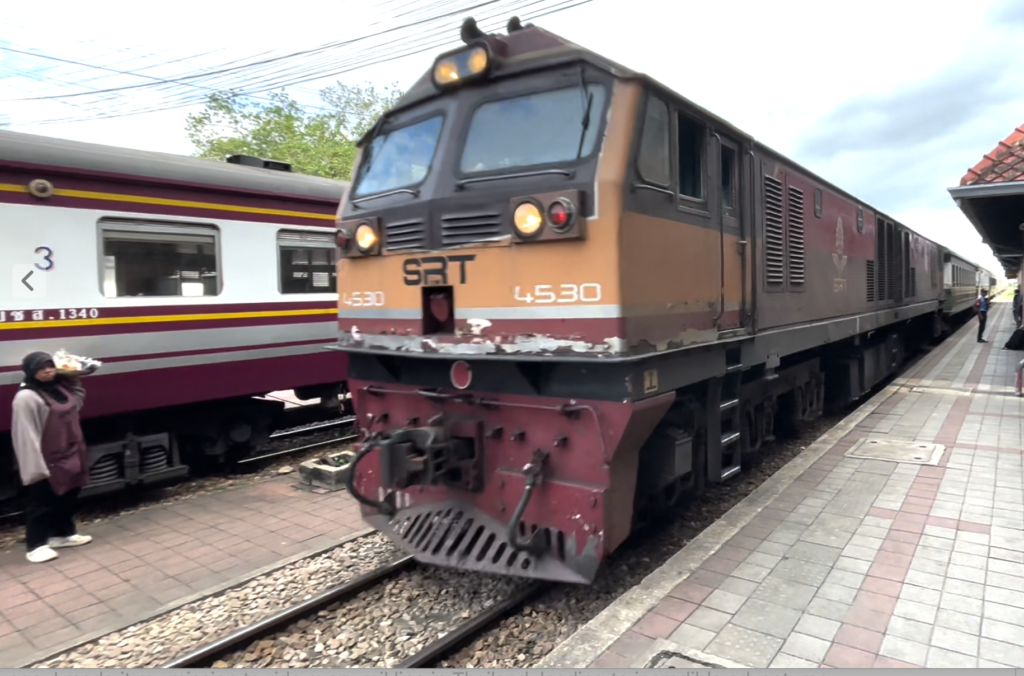
I have always had a passion for trains and train travel. Over the years, I’ve ridden trains in 76 of the 90 countries I’ve visited, from Finland to Morocco to the USA, Chile, and New Zealand.
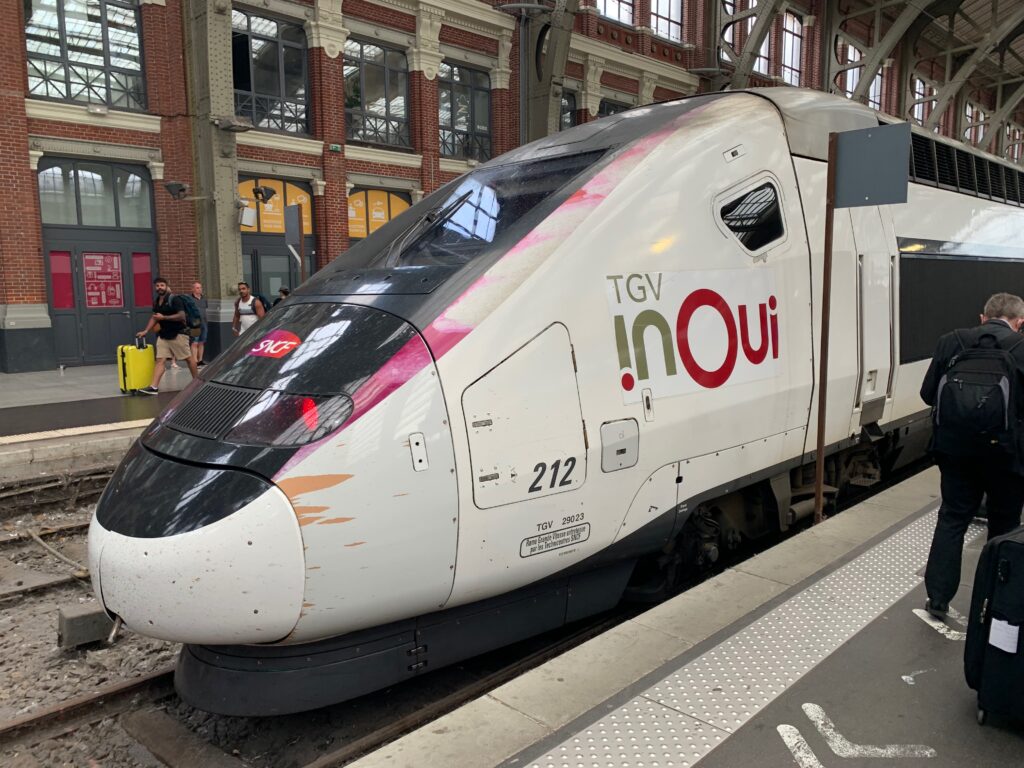
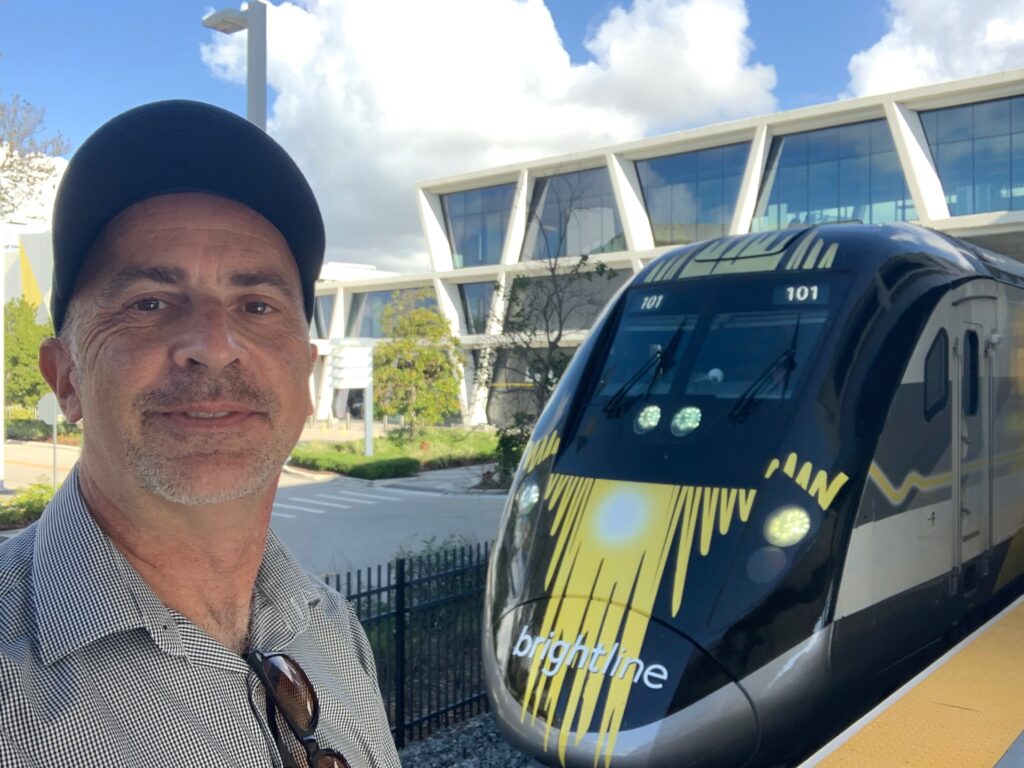
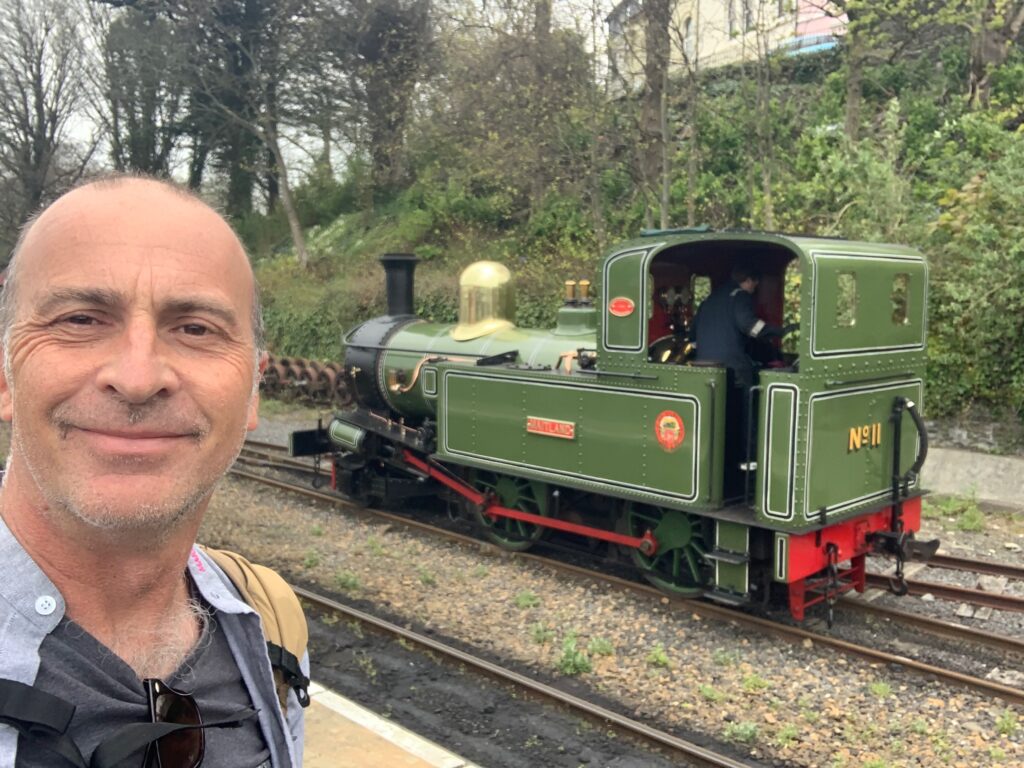
A few years ago, I made it my mission to ride every rail line in Thailand, leading to incredible adventures—from bustling Bangkok to cities like Chiang Mai, and serene rural stations. However, the southernmost railway line had eluded me for a long time. This line connects the border town of Sungai Kolok to one of the most isolated cities in the country, Yala, and then continues to Hat Yai, the economic capital of the South.
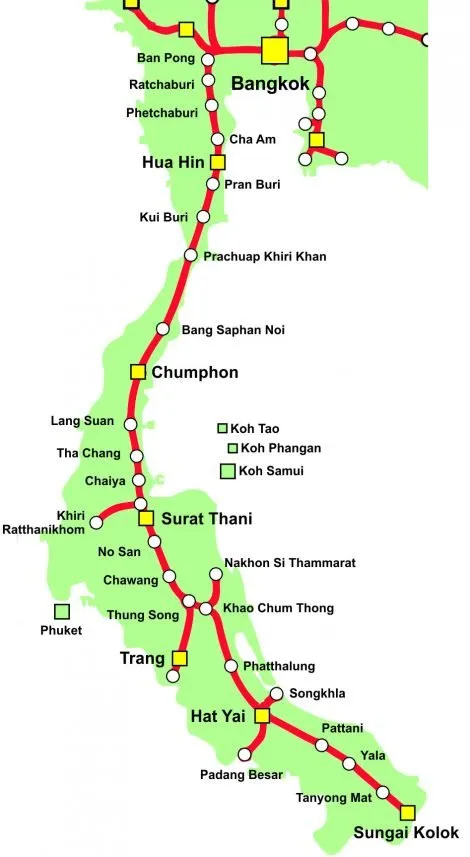
Every time I had seriously considered this journey, something had happened to prevent it.
My April 2020 trip was cancelled due to COVID-19 shutdowns. In 2021, the southern regions of Thailand were closed off for a long period. In 2022, I changed my mind after a train was derailed after a bomb attack on the track near Songkhla province.
My 2023 attempt was delayed after several coordinated bomb attacks against the railway line took place during the final week of the holy month of Ramadan.
My January 2024 journey was postponed after three Thai railway workers were killed by a bomb when clearing the wreckage from an earlier bomb that had derailed a freight train. November 2024 saw the lines closed due to significant flooding, cancelling that trip!
These incidents are the harsh reality of this railway line. Since 2004, more than 4,000 people have died in insurgency attacks in southern Thailand, and the trains are regularly targeted. Insurgents have bombed stations, fired at drivers, passengers, and security staff, and sabotaged the tracks. No one truly knows how often these attacks occur, as the information is classified, but the Bangkok Post has suggested that incidents have happened every few months since 2004. The Post wrote in 2016: “For passengers on the 12:33 train from Songkhla’s Hat Yai to Sungai Kolok, god and good luck are touchstones for survival.”
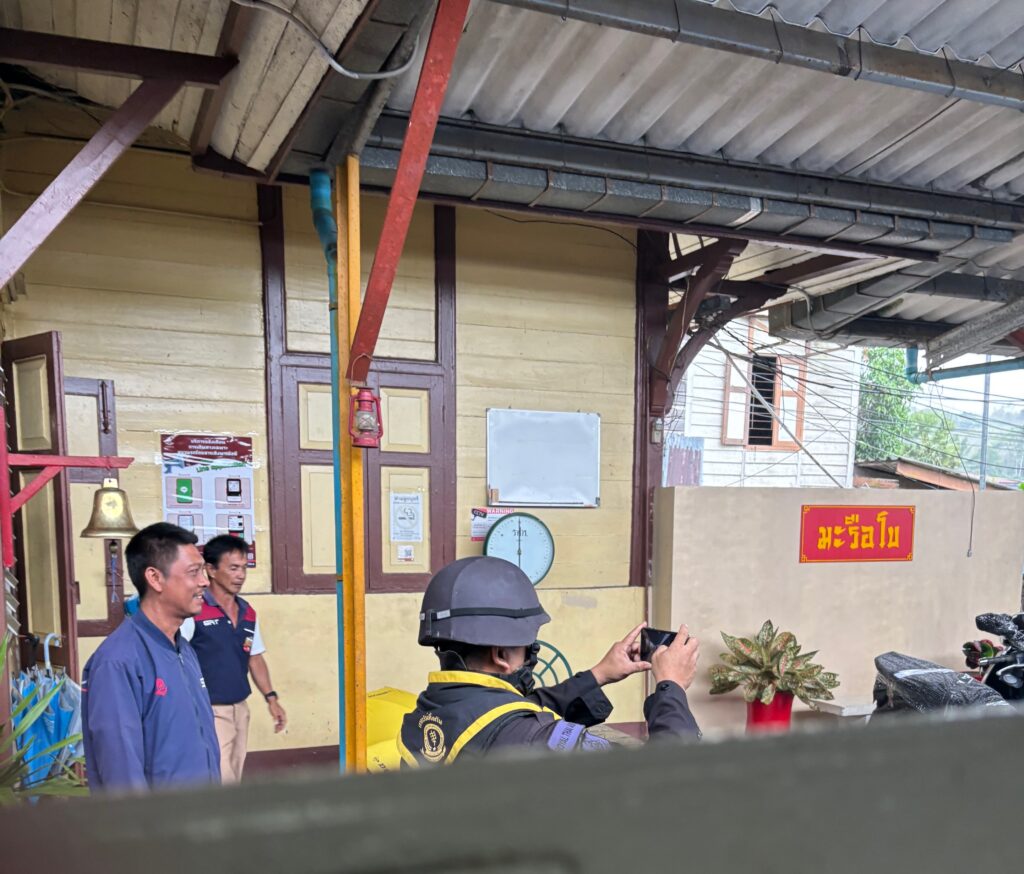
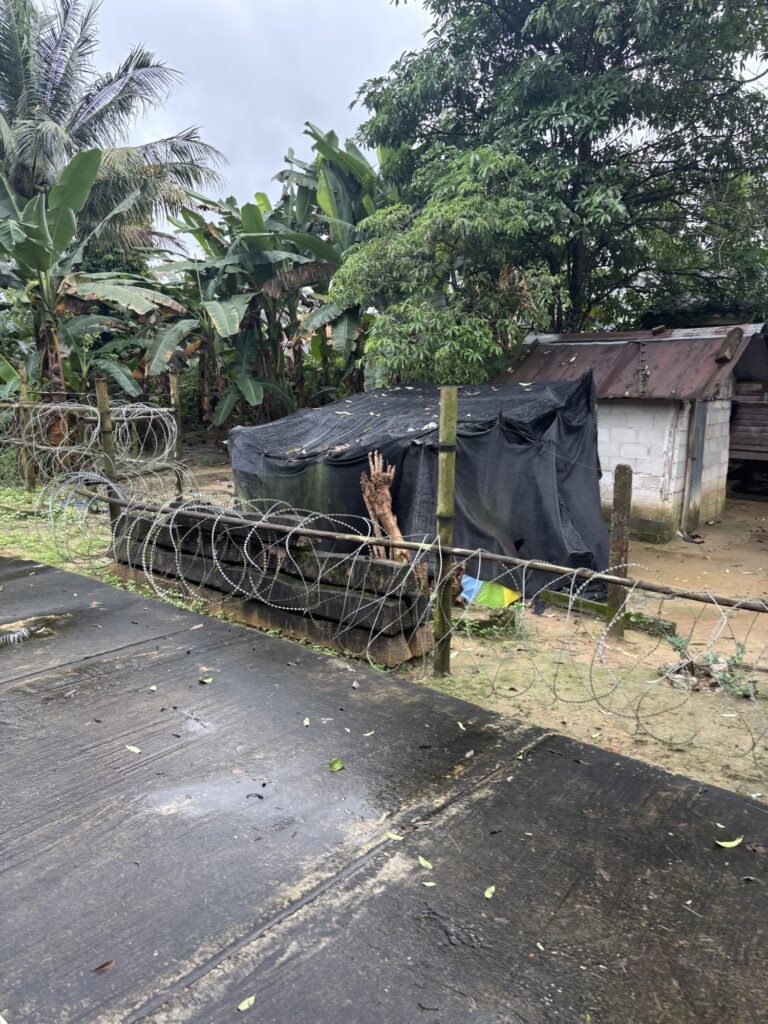
The train is targeted because it is seen both as a soft target and as a symbol of the Thai state. This is even though most of the people riding the train are poor (as the middle class avoids the train and takes cars) and are primarily local Muslim Thai Malays. As a result, stations and trains have significant security details and no trains run at night.
Was I in danger? Possibly, I could be in the wrong spot at the wrong time.
This Review
Today’s Trip report is divided into three sections:
- Summary
- Journey 1: Su-ngai Kolok to Yala
- Journey 2: Yala to Hat Yai – The Final Stretch
Summary
- Rating: 90%
- Route: Sungai Kolok (Malaysian Border) to Yala, then the next day from Yala to Hat Yai
- Operator: State Railways of Thailand (SRT)
- First Train: Rapid No. 72 loco hauled which runs from Sungai Kolok to Bangkok, i got off at Yala
- Second Train: Rapid No. 172 (Sungai Kolok to Bangkok, also loco hauled. I got on at Yala)
- Fare Paid: 52 THB (Sungai Kolok to Yala) + 213 THB (Yala to Hat Yai), Total: 265 THB ($UDS7.83)
- Highlights: Mind-blowing contrast in experiences
- What Could Have Been Better: The security situation, the wooden seats, smoking on the train, the chaotic boarding at Yala
Journey 1: Su-ngai Kolok to Yala
I recently shared my experience of walking across the border from Malaysia into Thailand after completing Malaysia’s East Coast Railway: The Jungle Line. My walk from Malaysia led me through the Royal Thai Government’s Su-ngai Kolok border post and into town. From there, it was a pleasant 900-metre walk to the railway station. Two motorcycle taxi drivers offered me a ride, but I didn’t need one at such a short distance. Su-ngai Kolok (pop. 38,000) is a prosperous and lively hub, largely fuelled by cross-border trade (and smuggling) and a steady flow of visitors from Malaysia. However, despite the activity, there were no Western tourists—in fact, during my entire time in the south, I did not see a single other foreigner.
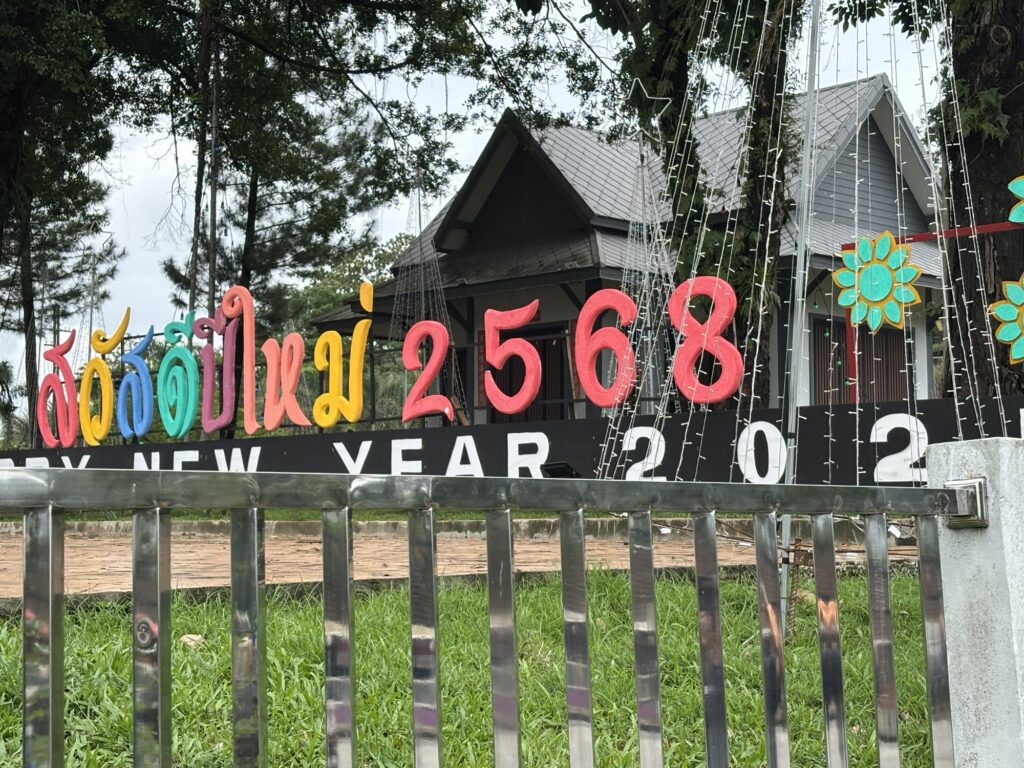
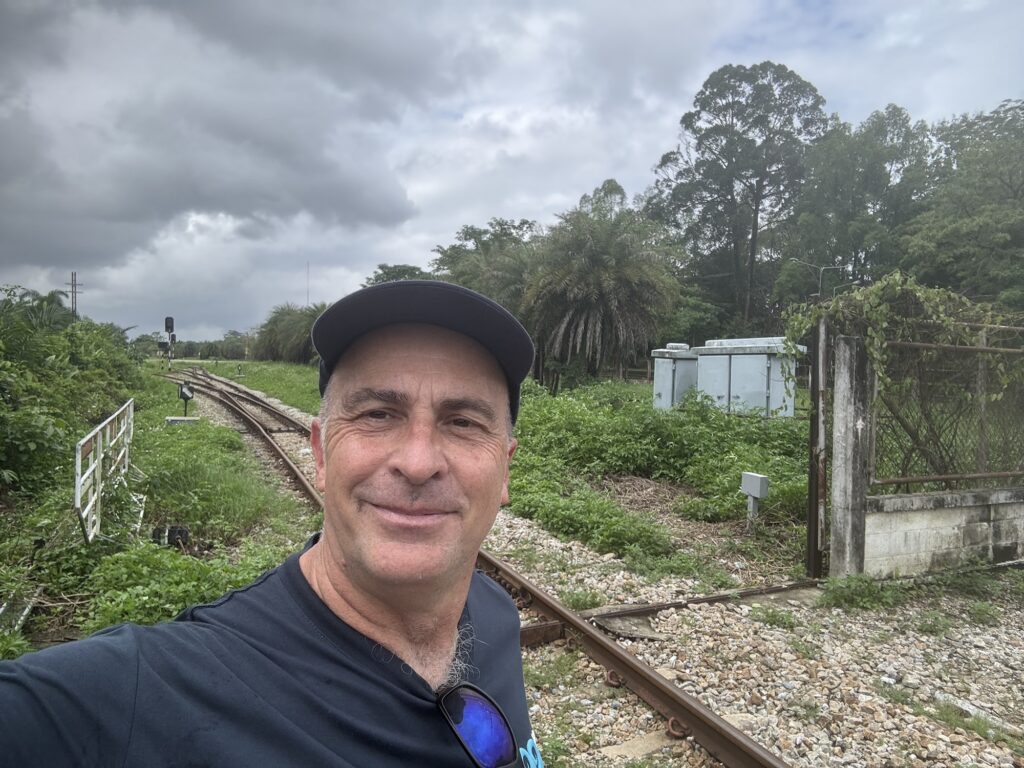
At Su-ngai Kolok Station, the scene was bustling—locals waiting, vendors selling food, porters carrying and loading parcels onto the train, and railway staff managing the passenger flow. As the terminus of the Southern Railway Line, this is the furthest station from Bangkok, sitting 1,143 km (710 mi) away. The station has four platforms, train stabling and cleaning yards, and good facilities, including adequately clean (but not free) toilets.
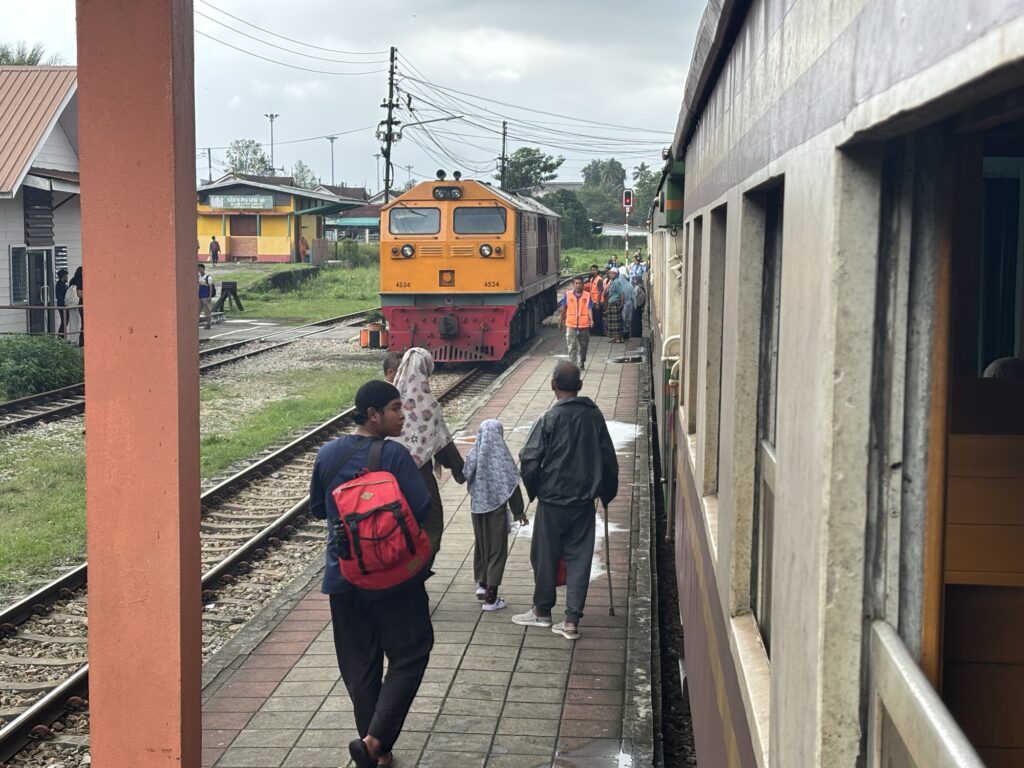
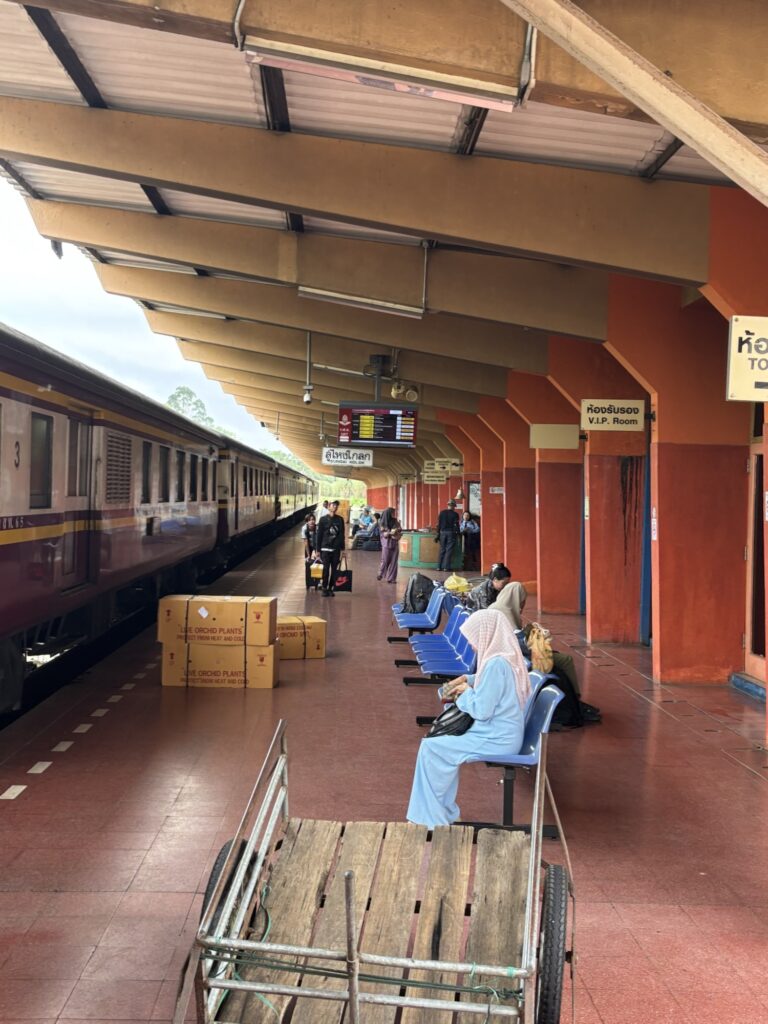
Thanks to my Thai language skills, buying a third-class ticket was effortless. Even without Thai, a passenger would be fine—the ticket staff effortlessly switched between Malay, Thai, and English. I grabbed a drink and a snack from a small shop, and the reaction was priceless—staff were stunned that a white foreigner was buying anything, let alone speaking Thai. They were even more impressed when I paid by scanning my local QR code!
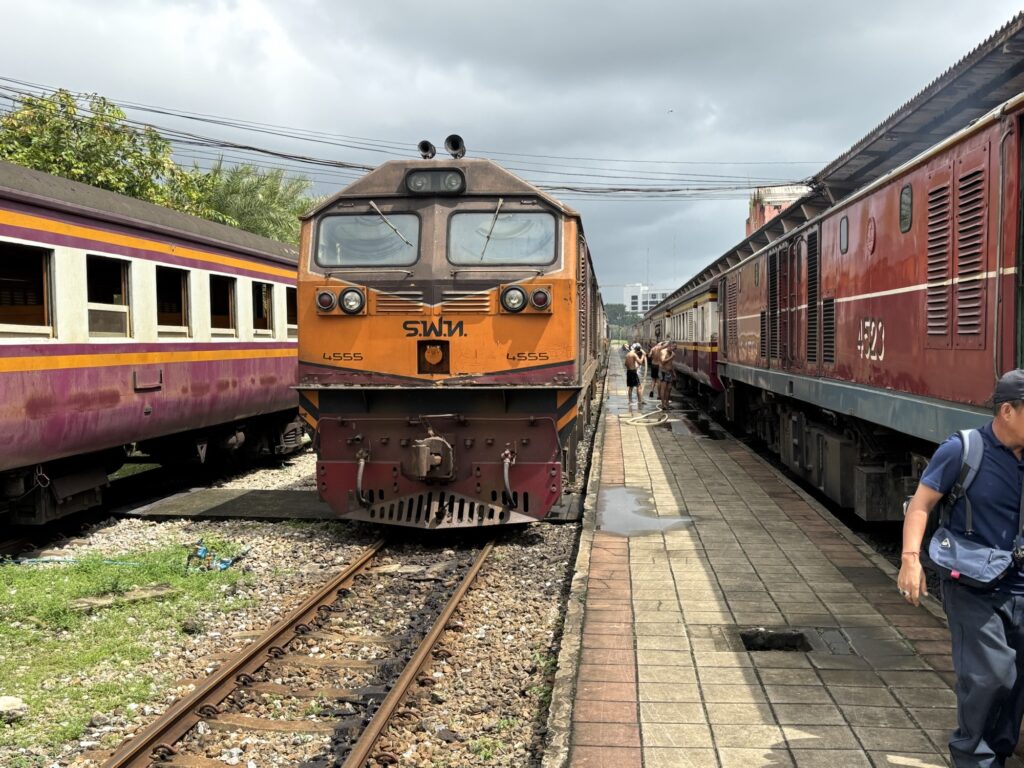
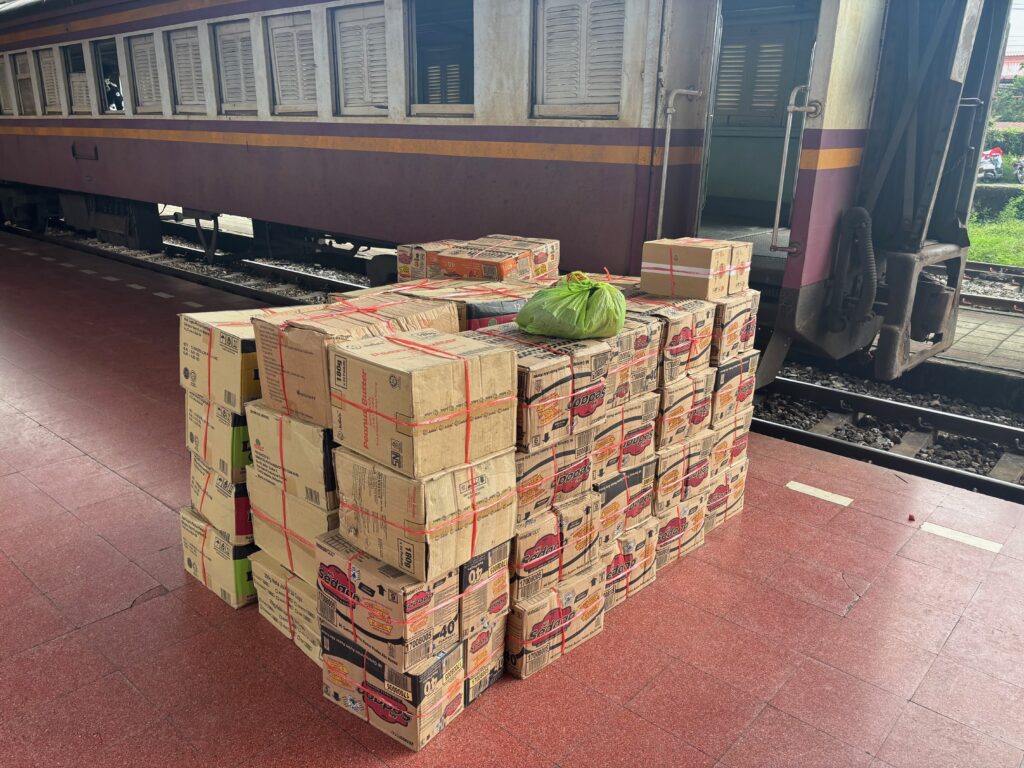
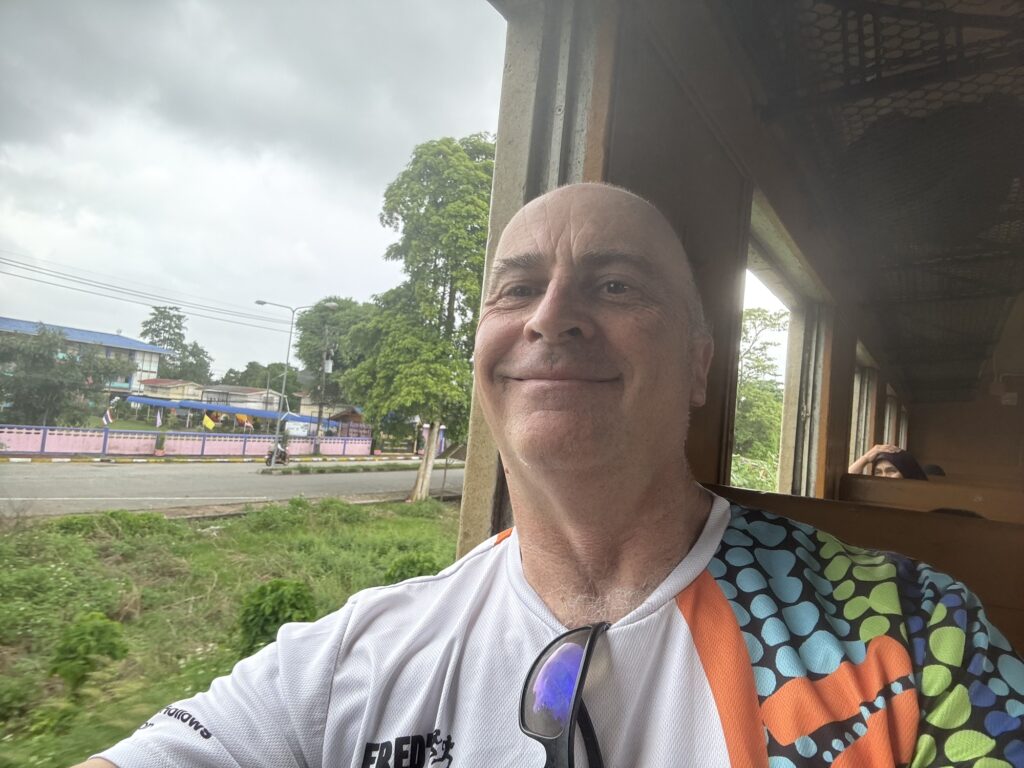
Soon, the long train with third-class and second-class cars pulled in. My third-class seat was wooden and had open windows, promising an authentic rail experience.
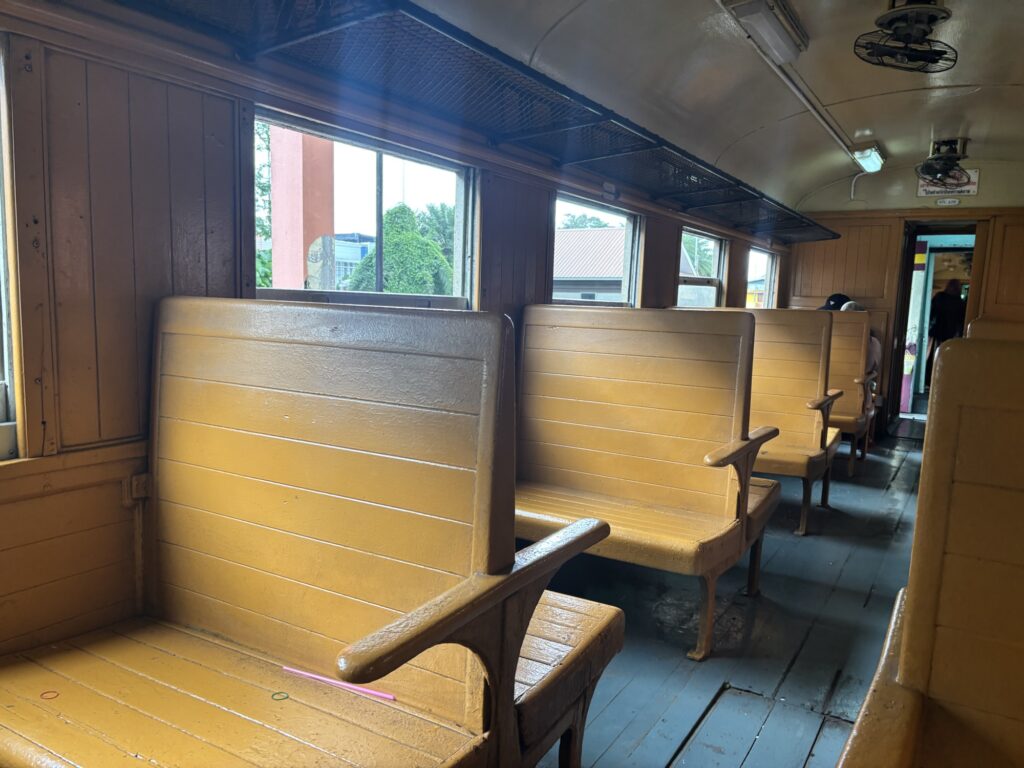
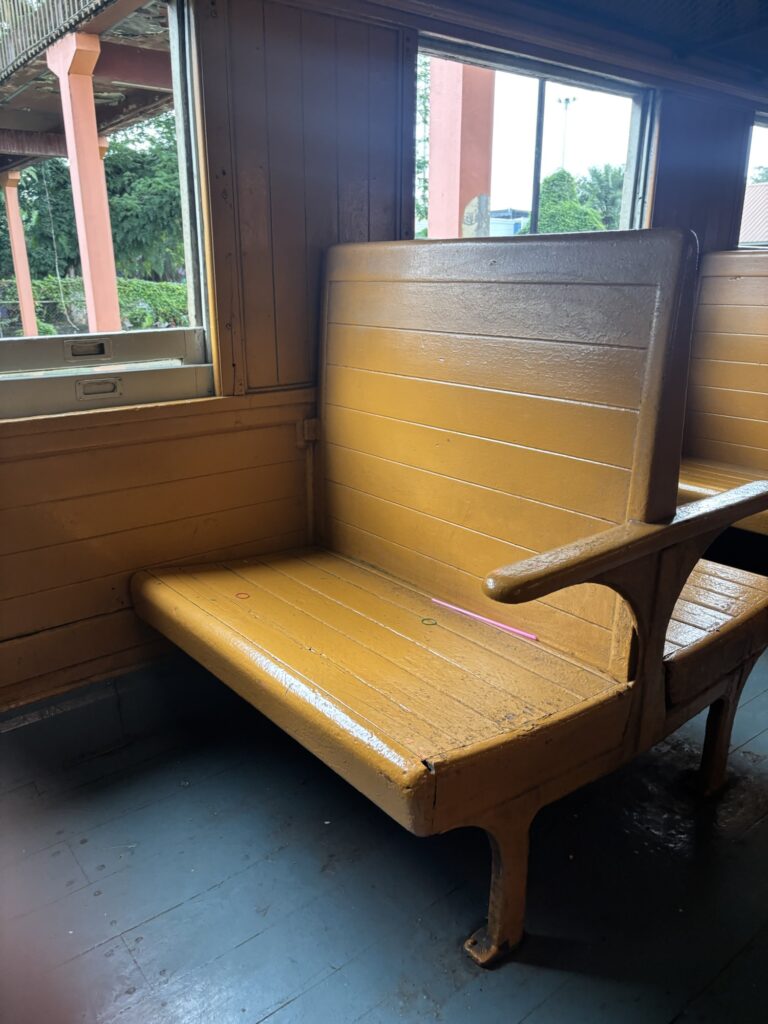
On a light hearted note, my seat collapsed early in the journey, pitching me onto the floor. I’m not that heavy! I made sure I laughed loudly and this proved a useful ice breaker. An older man sitting nearby chuckled and told me this was quite common. He even demonstrated how he now shakes the seat before sitting down to avoid the same fate! So much for worrying about a bomb attack—falling off my seat was a more significant concern.
The Military Presence
Soldiers monitored boarding at Su-ngai Kolok, maintaining a visible but non-intrusive security presence. However, the military presence intensified as we moved north. At several stops, large numbers of machine-gun soldiers lined the platforms. Many stations had sandbags and barbed wire barricades, a stark reminder of the region’s tensions.
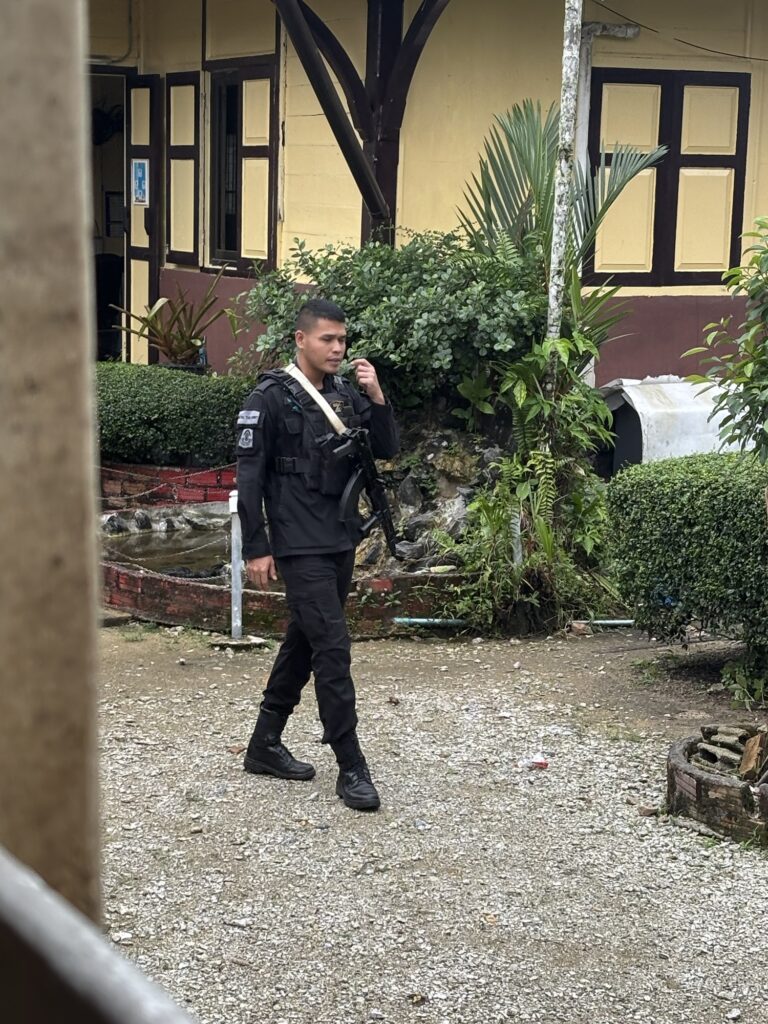
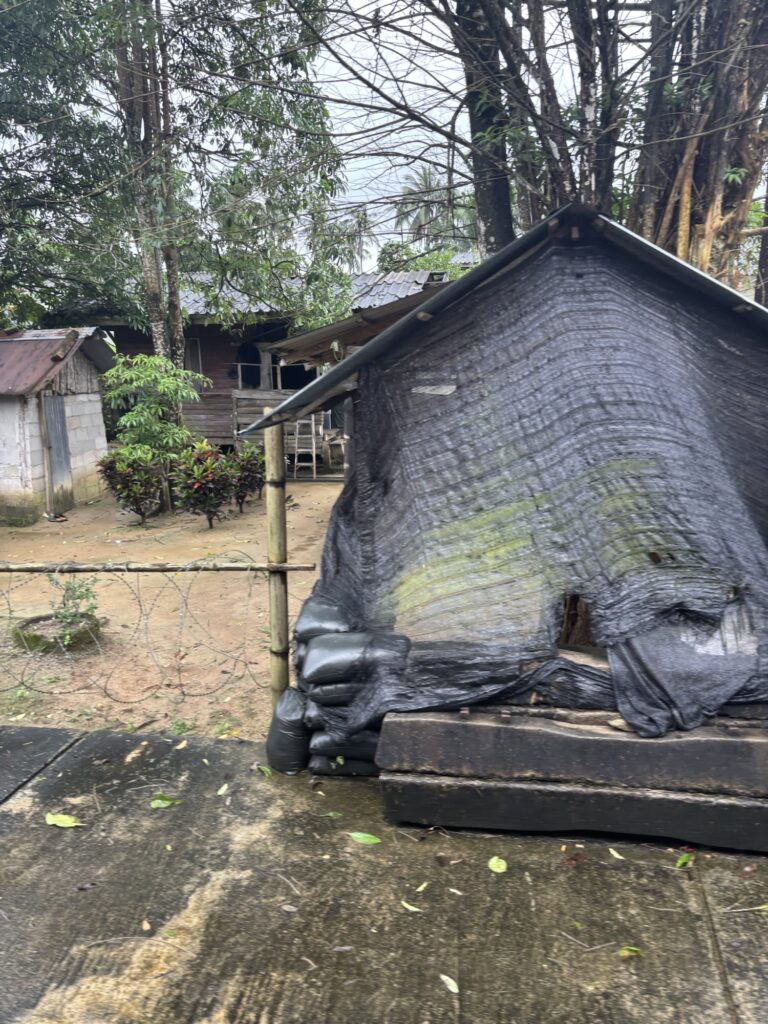
When the ticket inspector came through, soldiers stood at each end of the carriage. Two armed soldiers escorted the inspector—one leading in front, the other following behind. As he checked tickets, the soldiers questioned passengers at random.
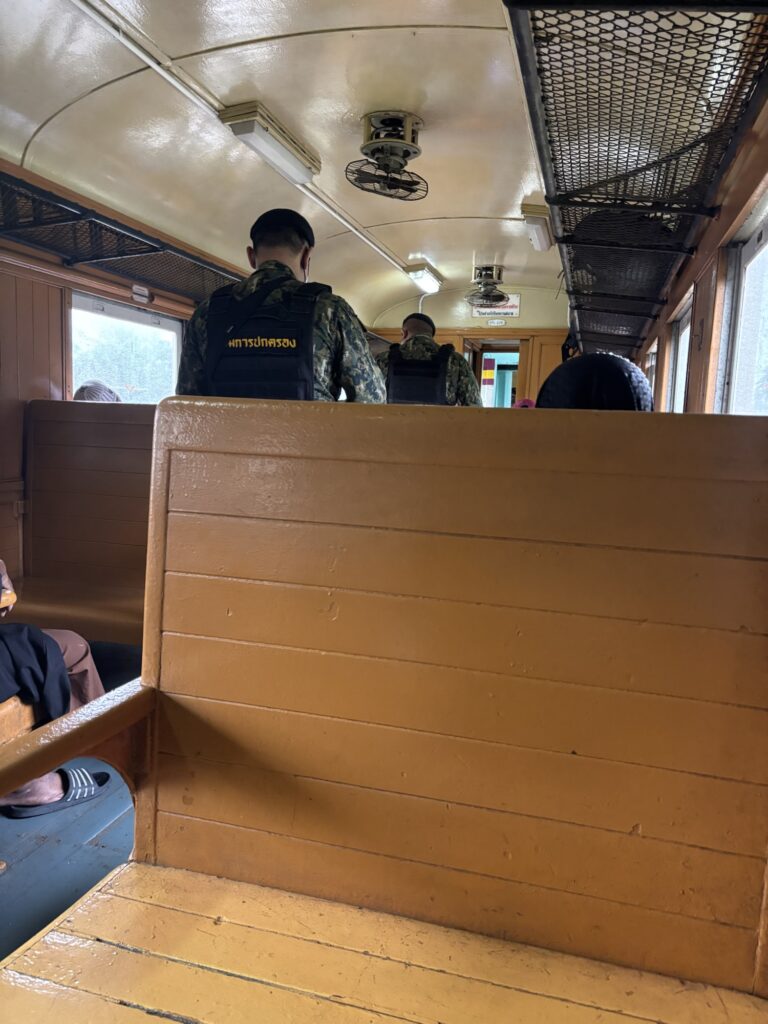
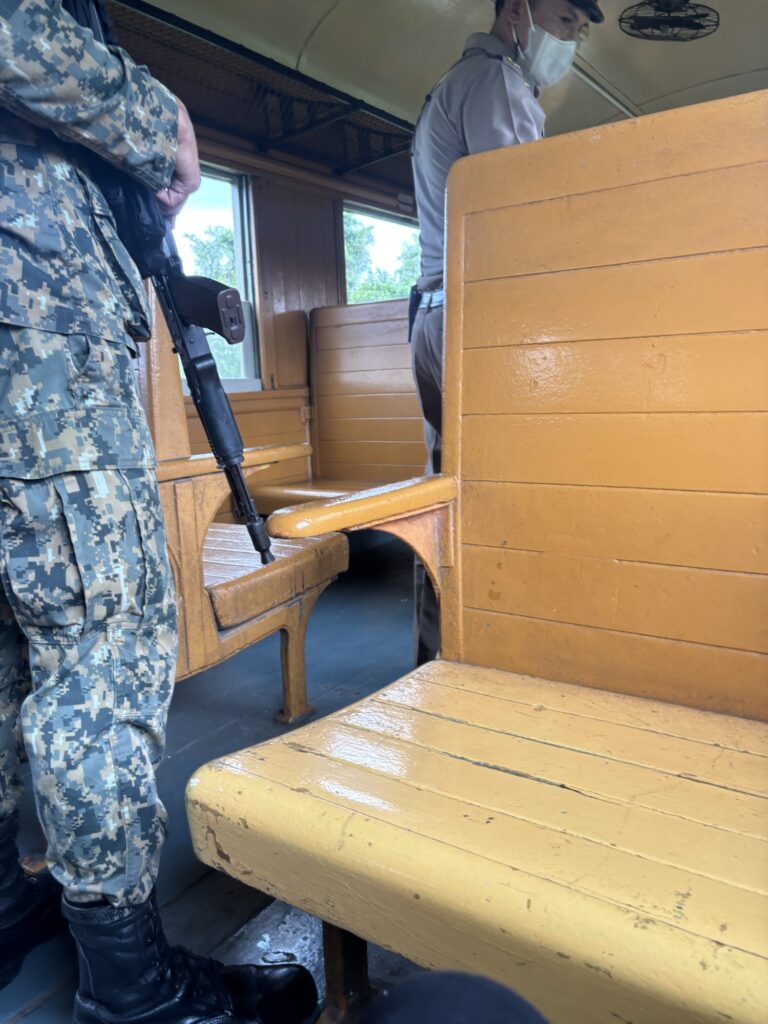
When they reached me, we exchanged smiles. They were surprised to see me there and didn’t ask me anything!
A Culturally Rich Journey
From Su-ngai Kolok to Yala, the railway line wound its way through stretches of lush countryside, meandering through Narathiwat province. Scenery was simply stunning. The towns along the route were much less developed and felt less prosperous than those I was used to seeing in the north. Most passengers were Thai Malay, and conversations blended Malay and Thai, reflecting the region’s cultural mix. The most noticeable shift was seeing more mosques than temples, a reversal of what I had seen in the north. The glimpses into a completely different Thailand compared to every other part I have visited, were utterly compelling.
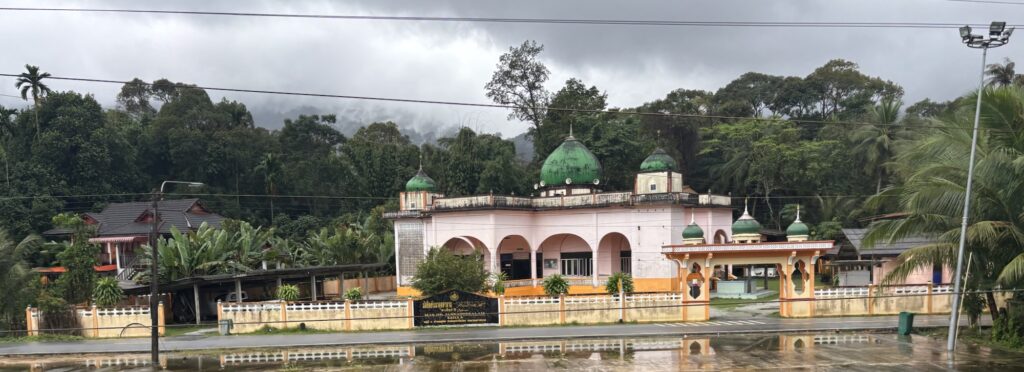
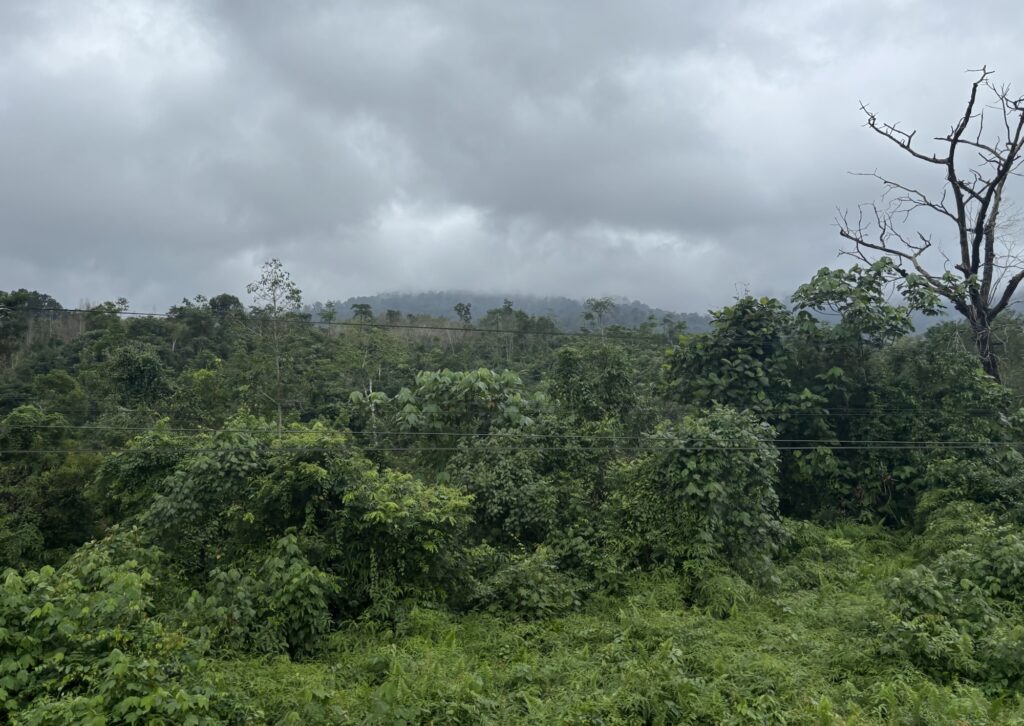
I had a great chat with the man opposite me, and we exchanged stories about our lives. This simple yet meaningful conversation highlighted the region’s positives beyond the headlines of conflict and security concerns. We talked in Thai but he volunteered most of his day to day to conversations are in Malay and be had never talked to a farang (white foreigner before). He couldn’t even think when he had last seen one!
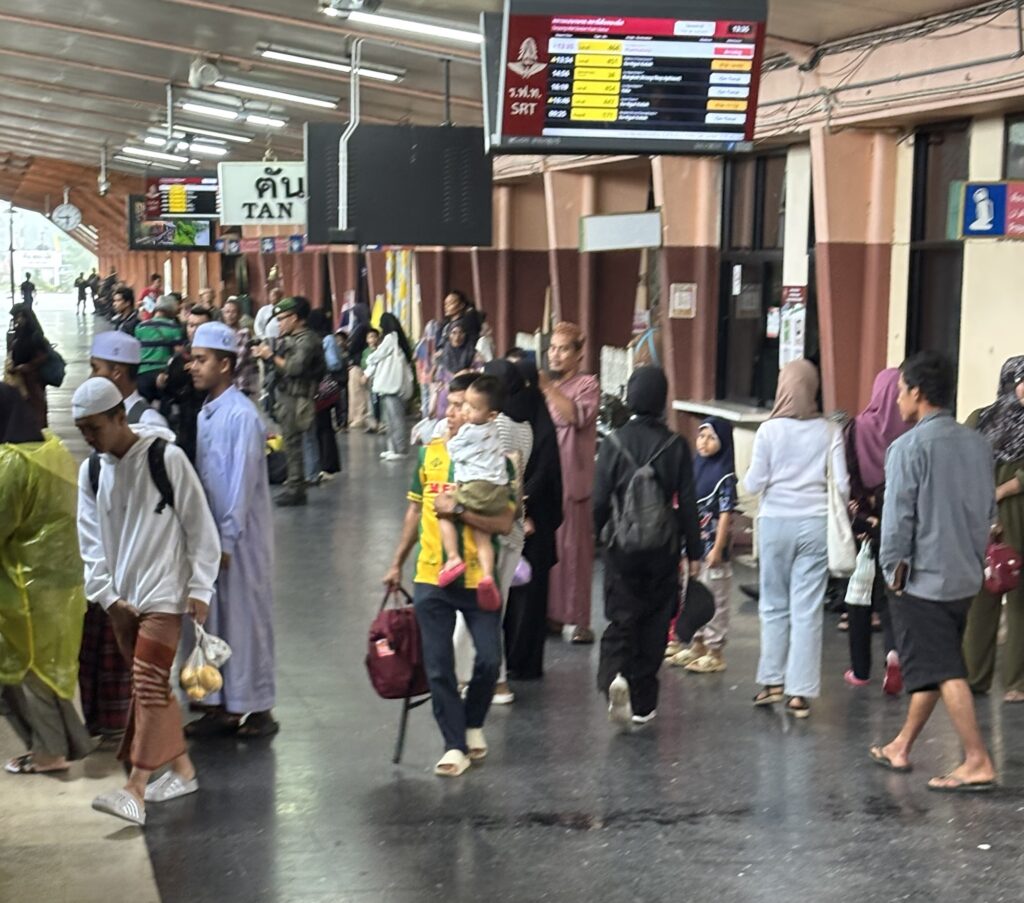
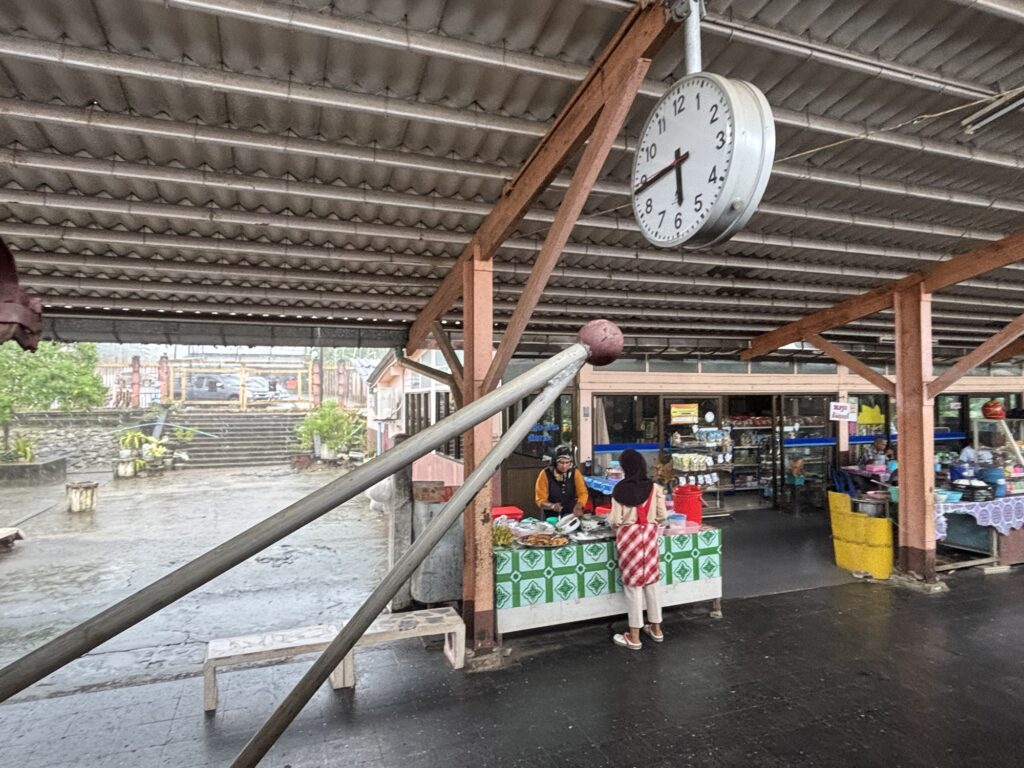
Around us on the train, the buzz of conversation was in Malay with the occasional Thai thrown in. All official transactions were largely in Thai language.
Visiting Yala City
Arriving in Yala was a striking experience. It was unlike anything else I had felt or seen in Thailand. I found it hard to anchor my thoughts and fully understand what I witnessed. I will publish a review on Thursday about this place.
The city stood out for its wide, tree-lined boulevards, well-planned layout, and strong multicultural identity. Food was incredibly affordable, but the divisions between Malay Muslims, Chinese Christians, and Thai Buddhists were clear and distinct.
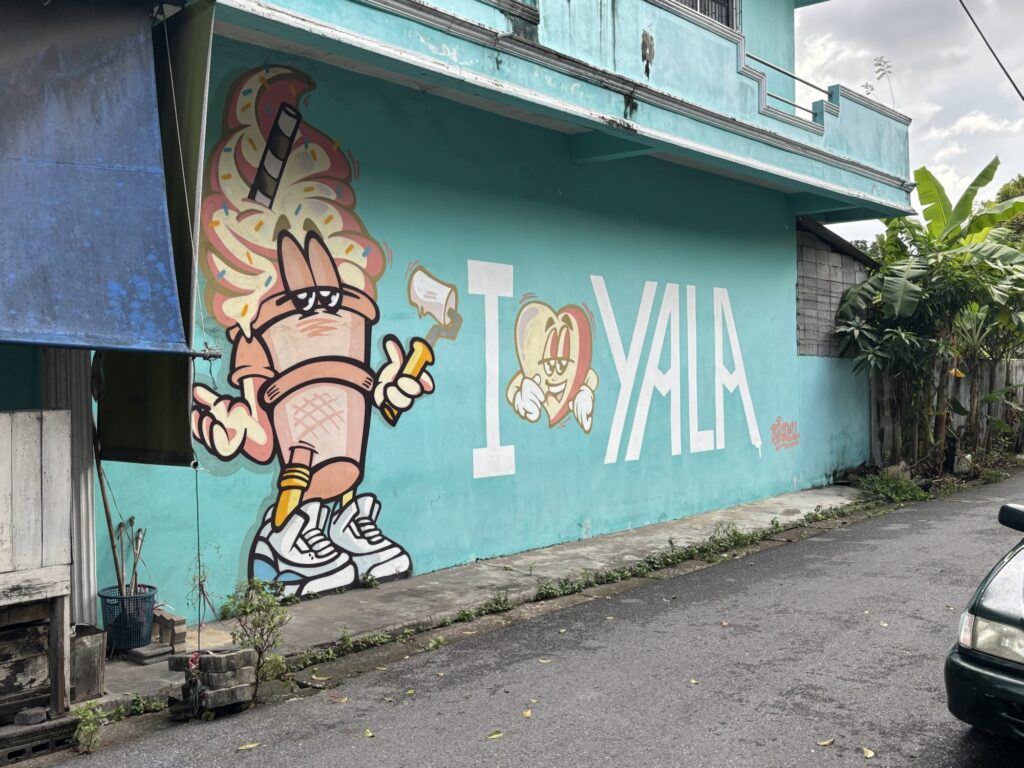
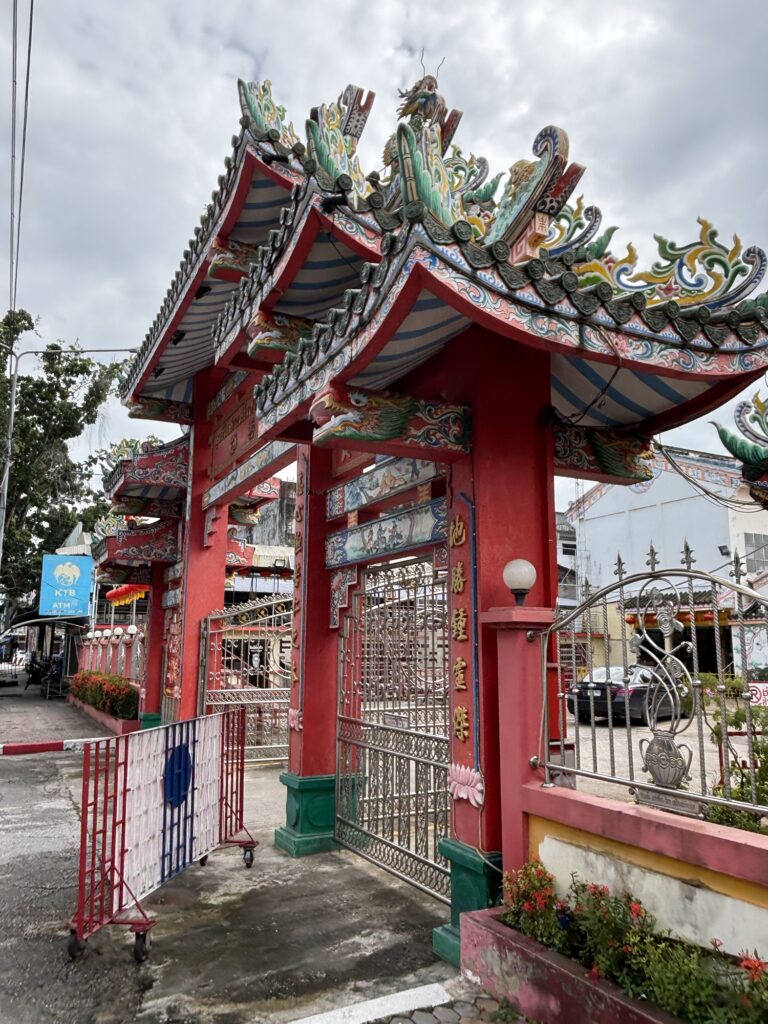
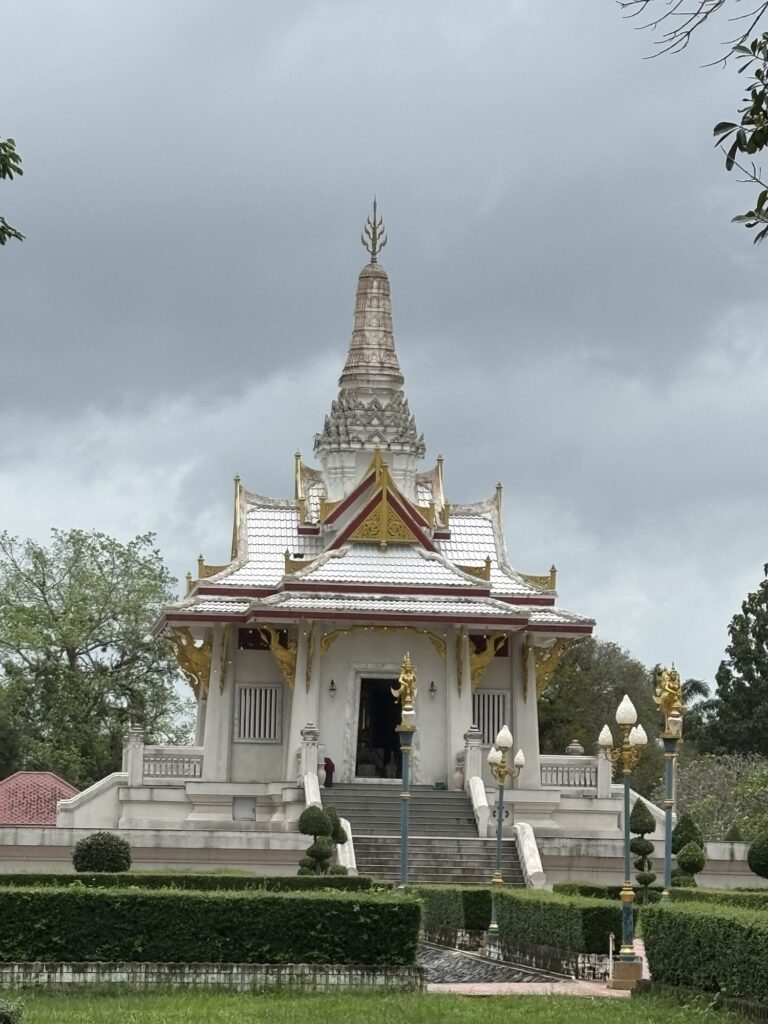
At the same time, security was ever-present. Everywhere I turned, security heckpoints, and military outposts surrounded the town. The heavy security presence was a constant reminder of the ongoing tensions in the region.
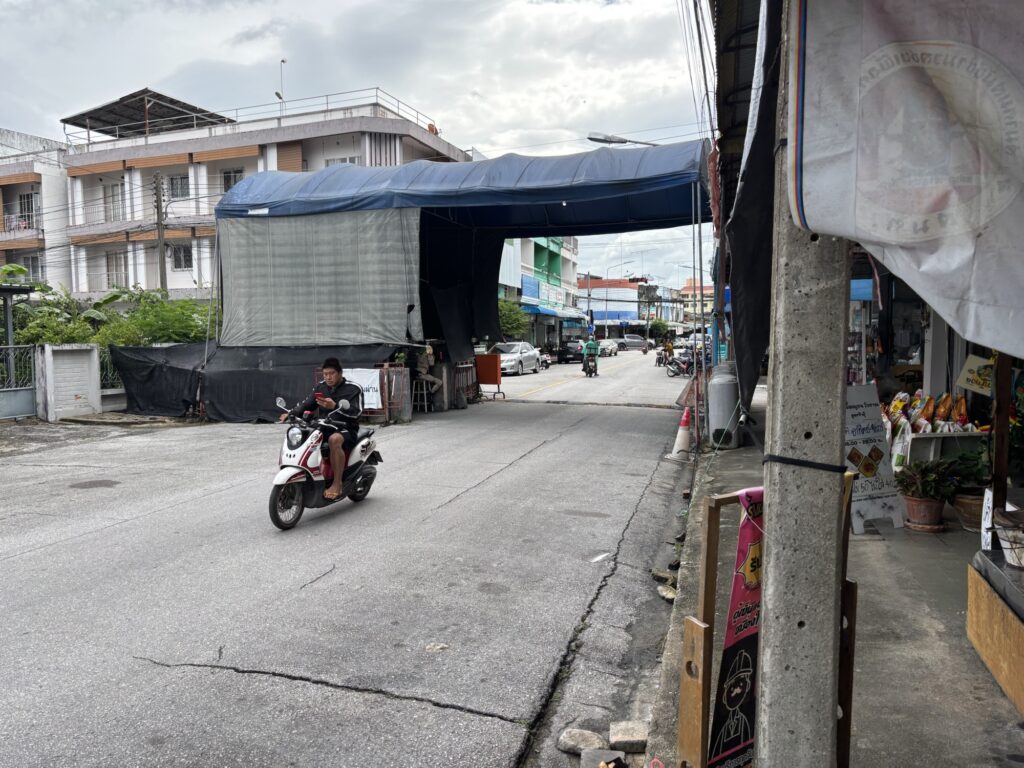
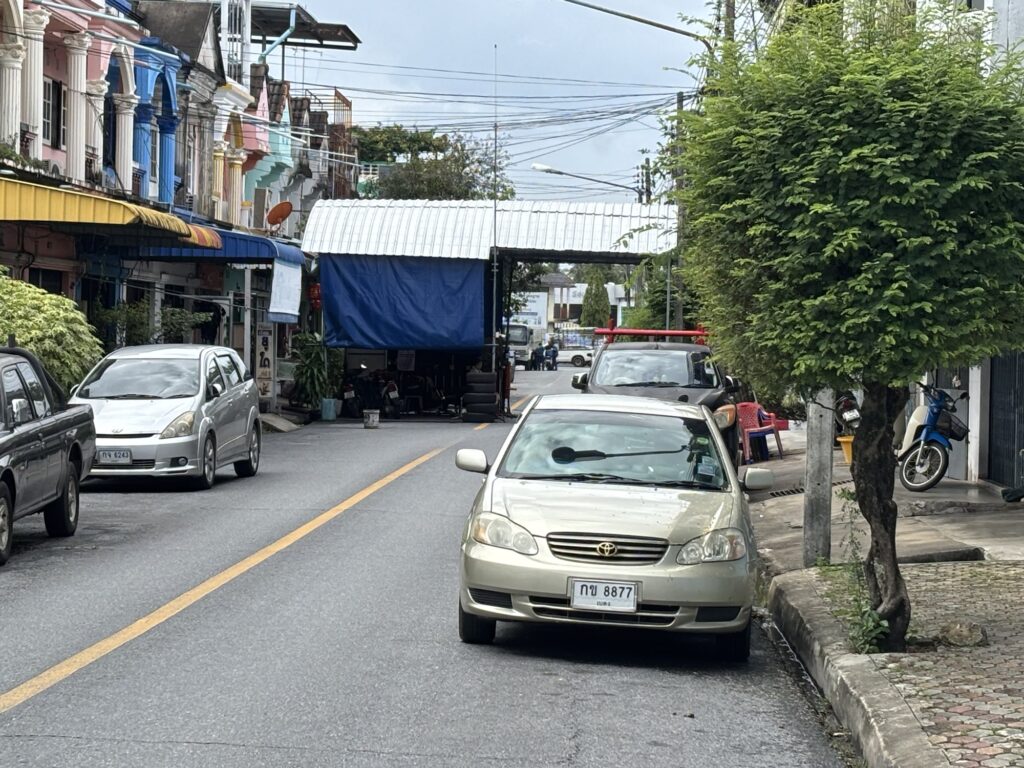
I had planned to drive to the coast to visit some towns, but to be safe and more inconspicuous after a bomb attack on two policeman, I decided to stay put and explore Yala instead. Despite the region’s reputation, I never felt particularly unsafe in Yala. I had encountered a mix of reactions while visiting this town—some people were visibly suspicious, others were fascinated by me and why I was there. Most people were incredibly friendly.
Journey 2: Yala to Hat Yai – The Final Stretch
Walking to Yala Station was an experience in itself. My morning started with a sightseeing walk from my hotel via a café or two, before finally making my way to the station. To get there, I had to pass through a few military checkpoints surrounding the downtown area. While looking at the city’s main mosque, a man approached me. He wasn’t aggressive, but his words in English were clear: “Leave.”
He pointed toward the station and added, “Get out.” I wasn’t sure if it was advice or a warning, but I reassured him that I was already heading there. He insisted, “You need to go now.” So, I did.
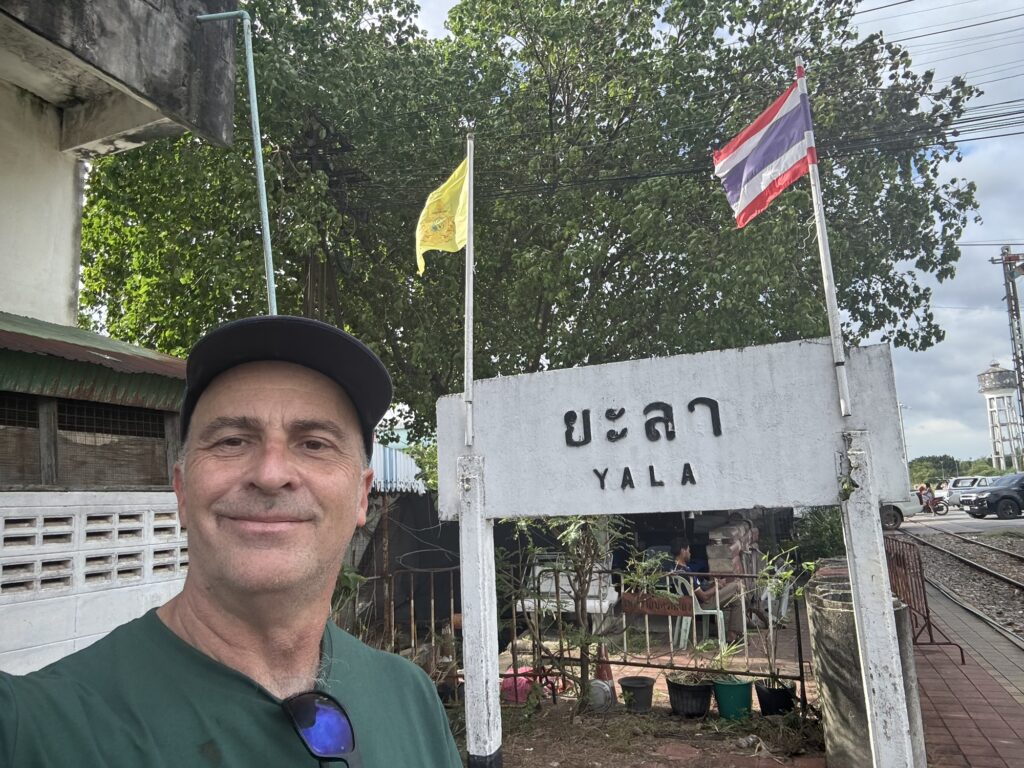
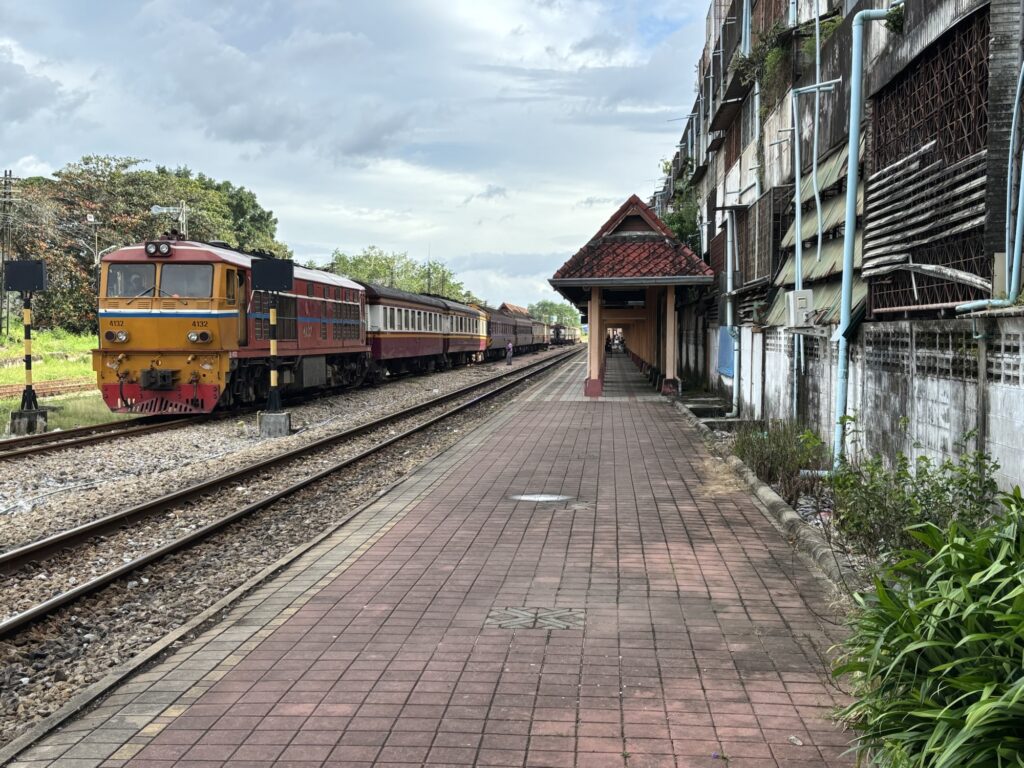
Chaos at Yala Station
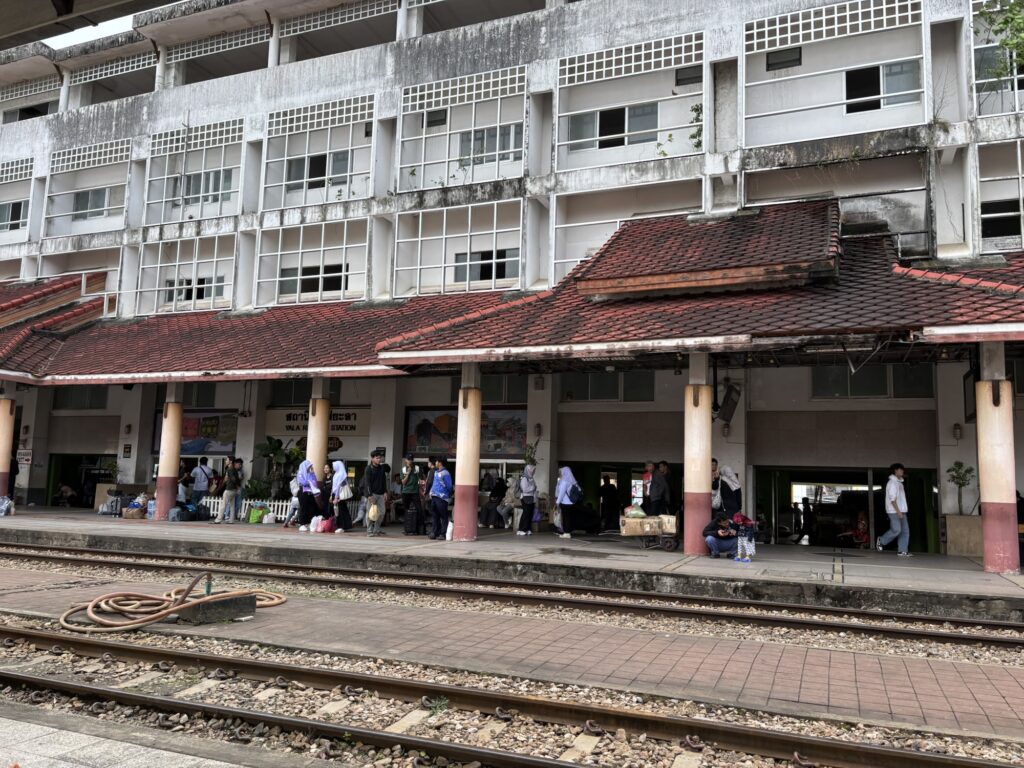
Buying a ticket at Yala was far less straightforward than I expected. It was Friday, a holiday for many, and the station was packed. A huge number of passengers were heading to Hat Yai, with many continuing to Bangkok.
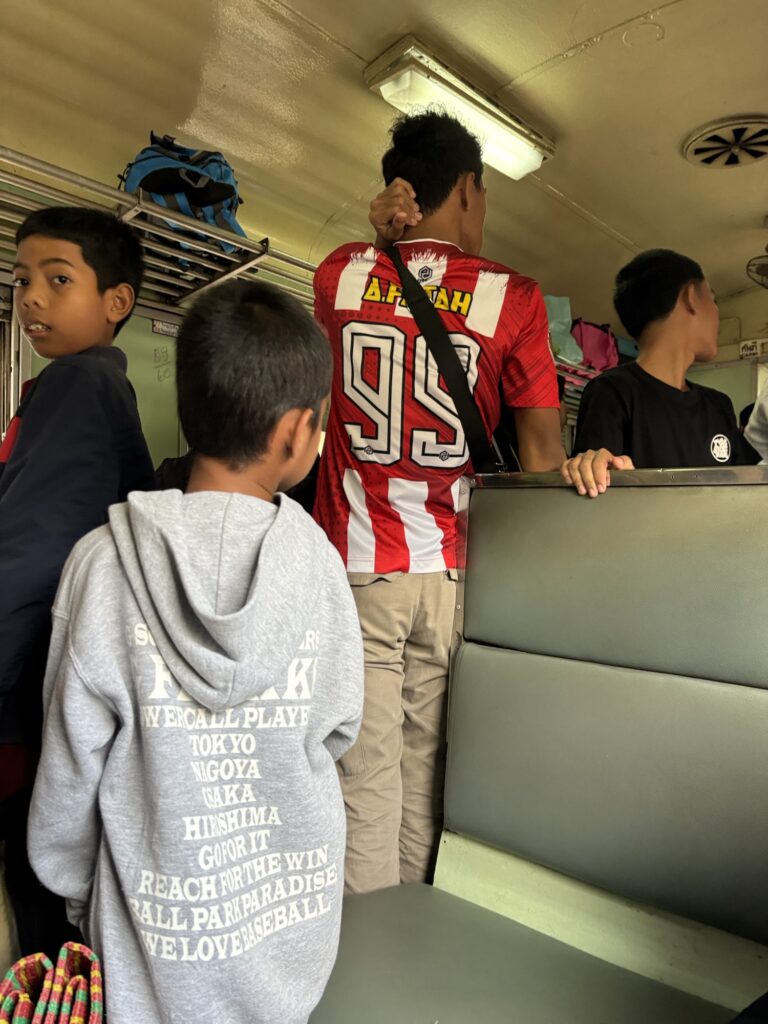
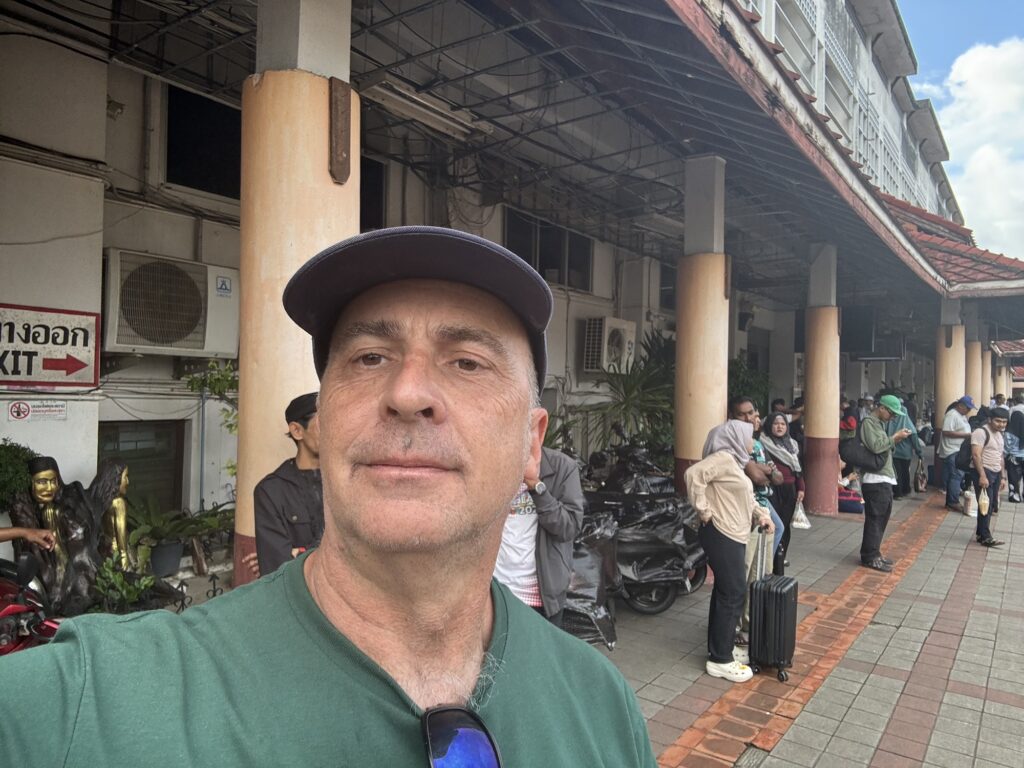
I stood in line for what felt like forever, stuck behind a woman who couldn’t decide—she didn’t know which train to take, which seat to book, or even how many tickets she needed. Meanwhile, I watched as other queues moved quickly, their passengers buying tickets and moving on.
When my turn finally came, I could sense the people behind me watching, probably groaning inwardly, assuming this foreigner would be just as slow as the previous woman. But I knew exactly which train I wanted, had my Thai ID ready, and scanned my bank app to pay. The whole transaction took less than two minutes. As I stepped away, I saw visible relief from those behind me—they had expected another delay, but I had moved through efficiently.
Boarding the Train: A Confusing Mess
The boarding process was chaotic and confused. Many passengers seemed to have never travelled by train before!!! On my carriage, two large groups (one with 15 people, another with 20) were trying to rearrange their seats, adding to the disorder.
Worse, the seat numbering system had been changed. The original train layout had two seats on one side and three on the other, but someone had modified it to a 2-2 layout. Instead of updating the official numbering, they simply scribbled new numbers by hand.
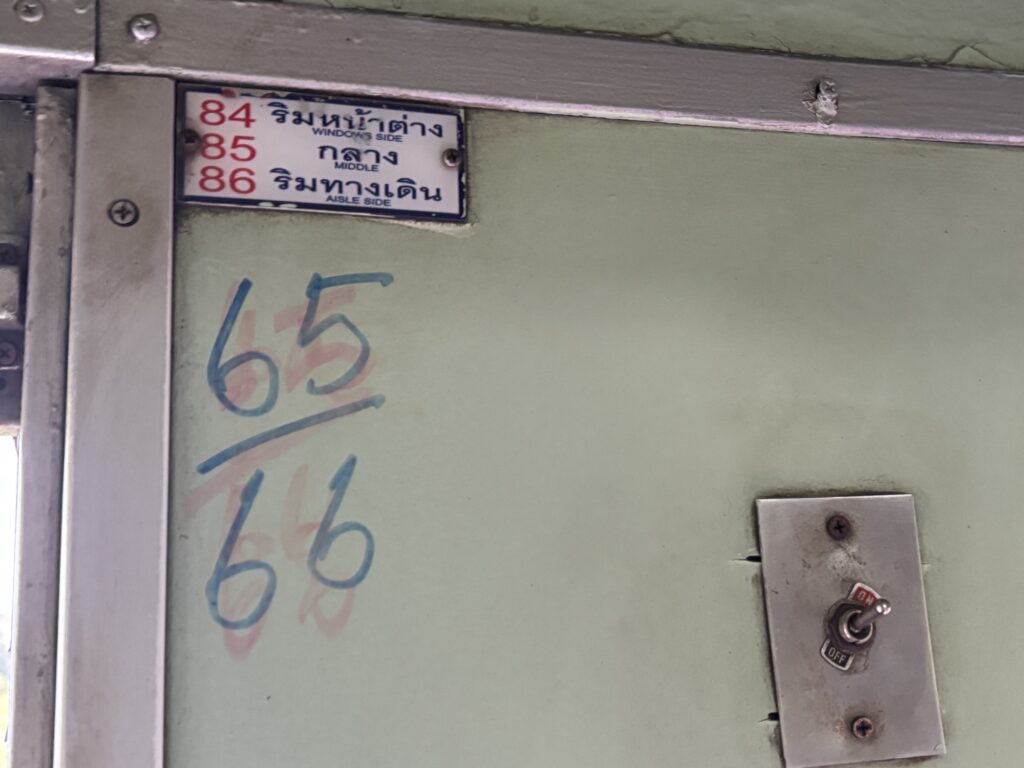
Unsurprisingly, many of us sat in the wrong seats, following the official numbers rather than the new handwritten ones. Eventually, we figured it out, and I exchanged friendly greetings with the couple sitting next to me. Our conversation was limited, but it was a pleasant ride.
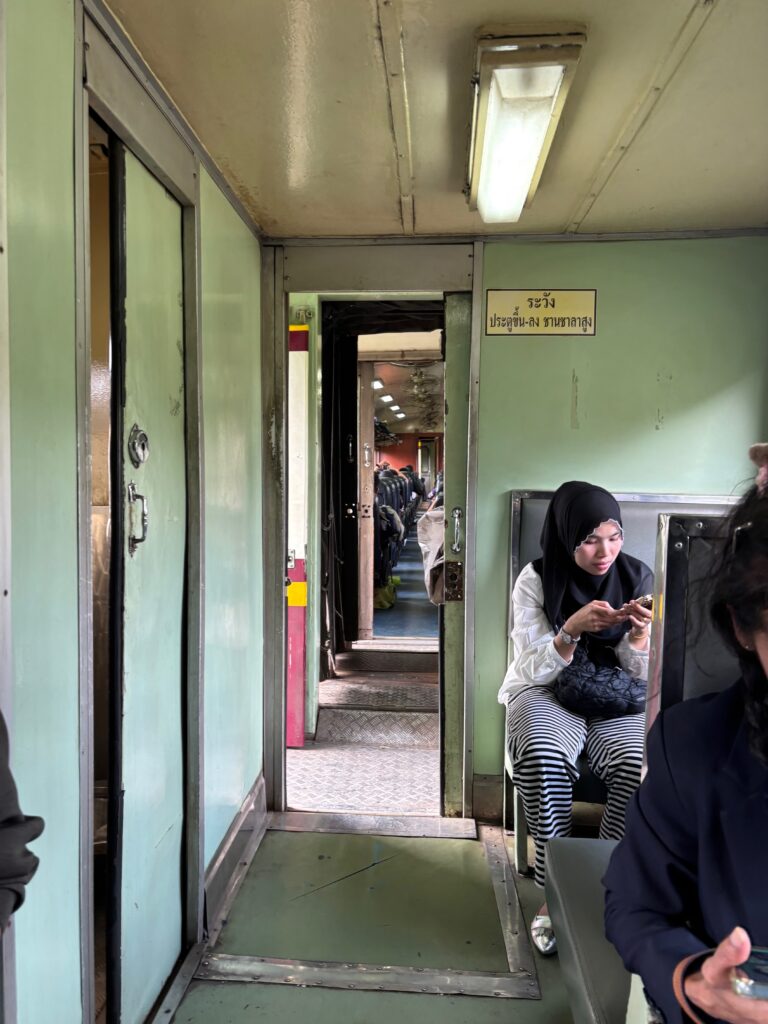
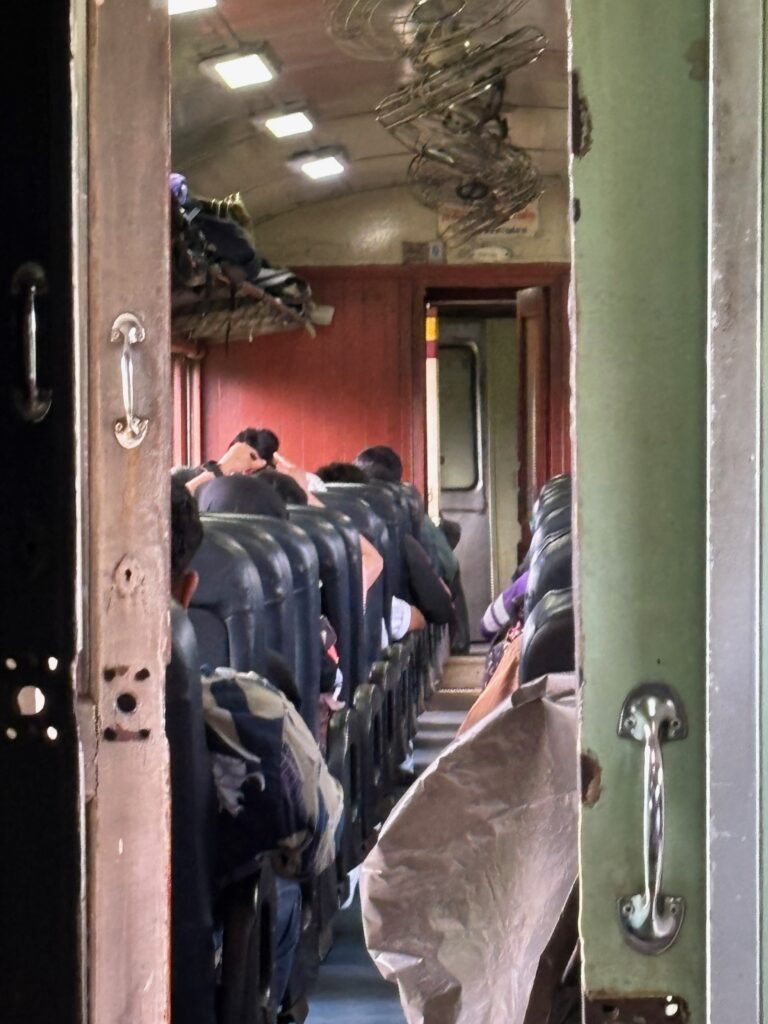
A Scenic Journey… with Smoking
The journey was smooth and beautiful, offering a peaceful ride through southern Thailand’s countryside. Vendors regularly boarded the train, selling food and drinks, adding to the lively atmosphere.
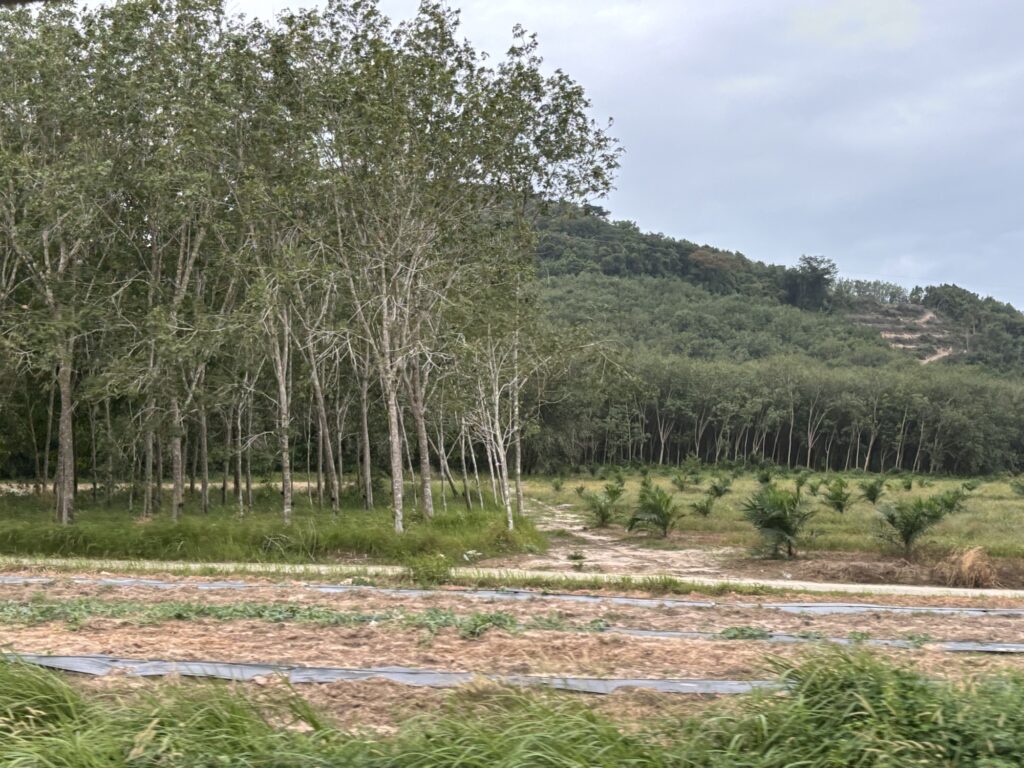
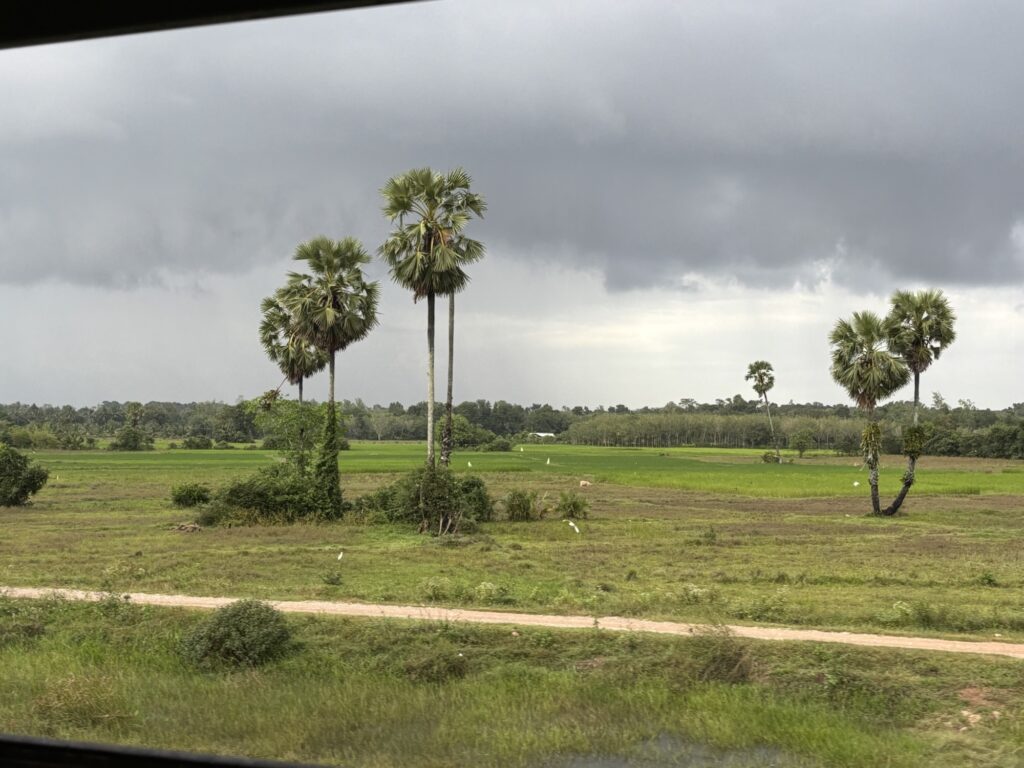
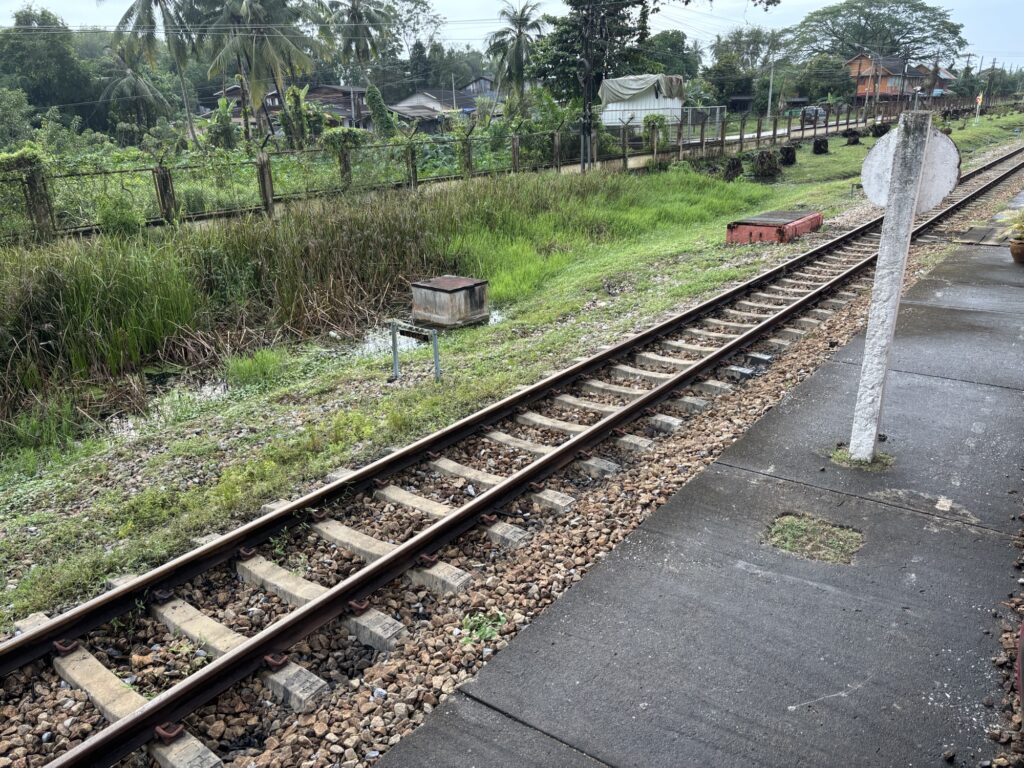
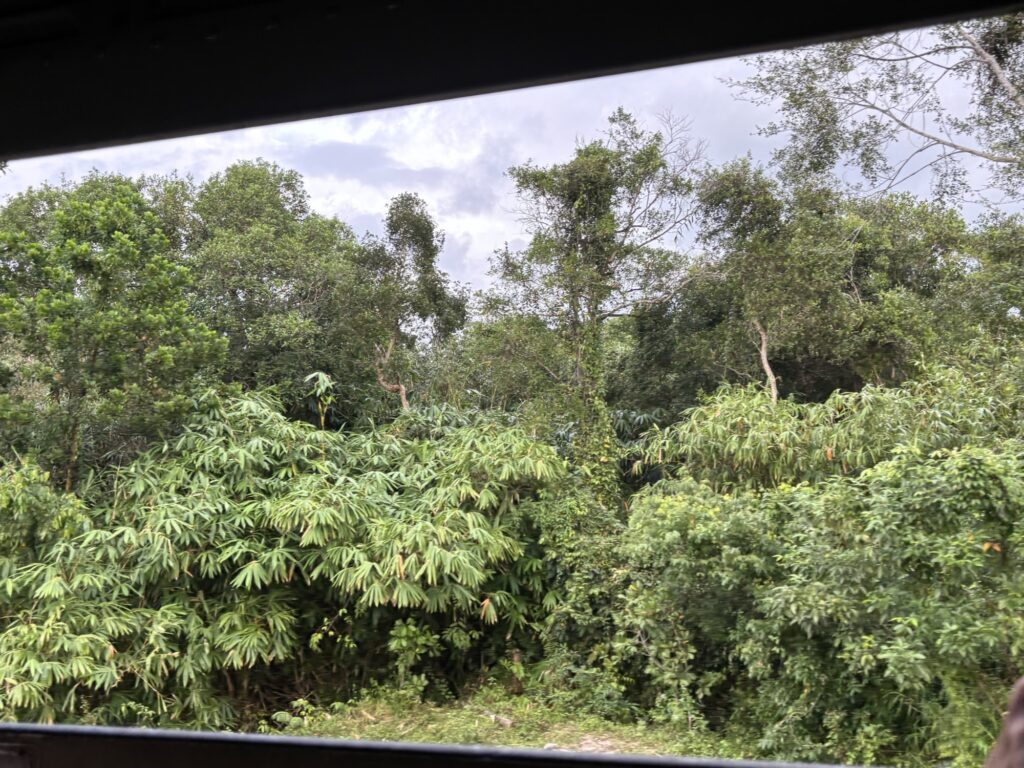
Unfortunately, many passengers ignored the smoking ban, lighting up inside the carriage entrances and in the toilets. I had forgotten just how much I hate the smell of cigarette smoke on a train. Since the windows were open, the smoke blew back into the carriage, making it unavoidable.
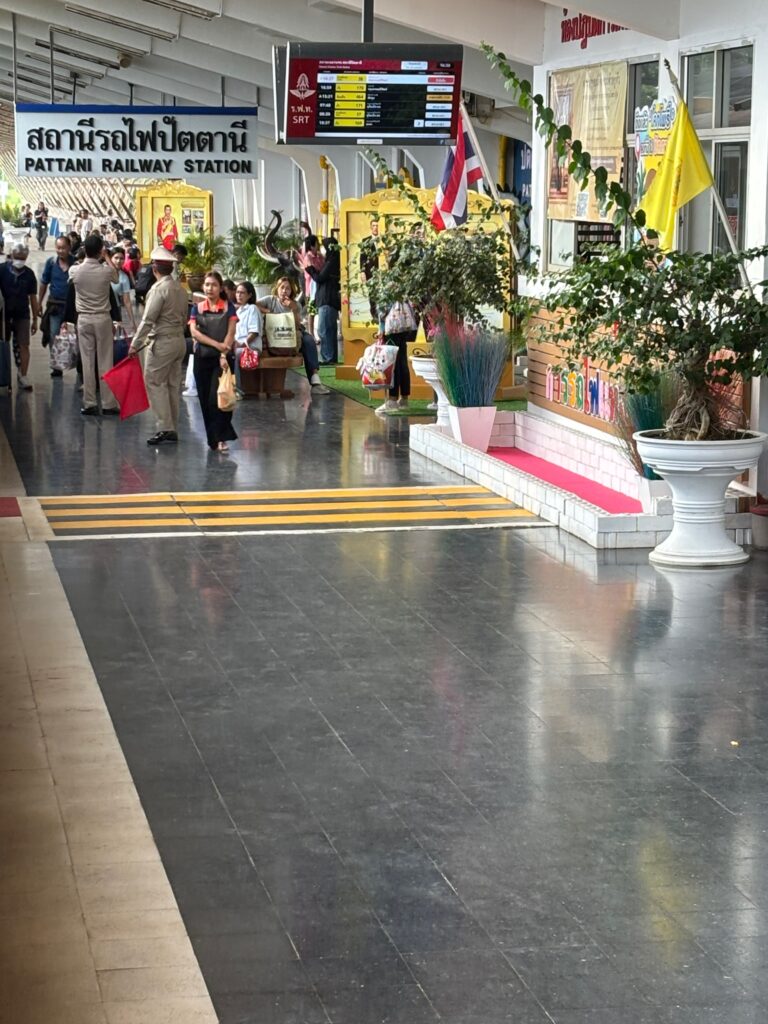
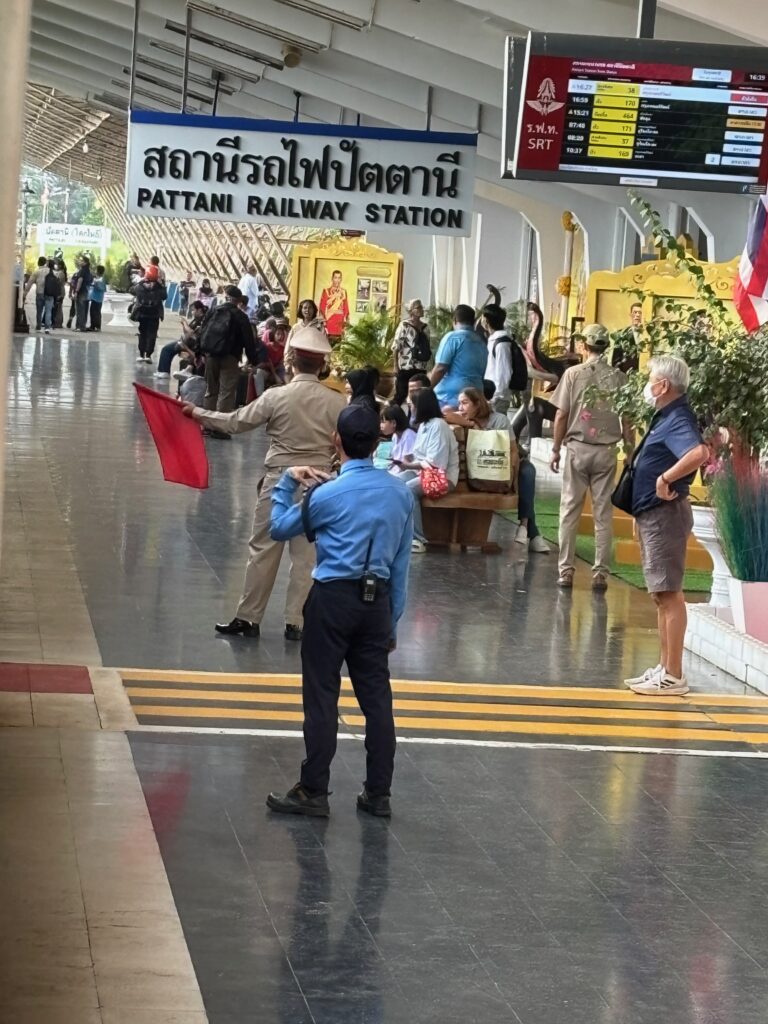
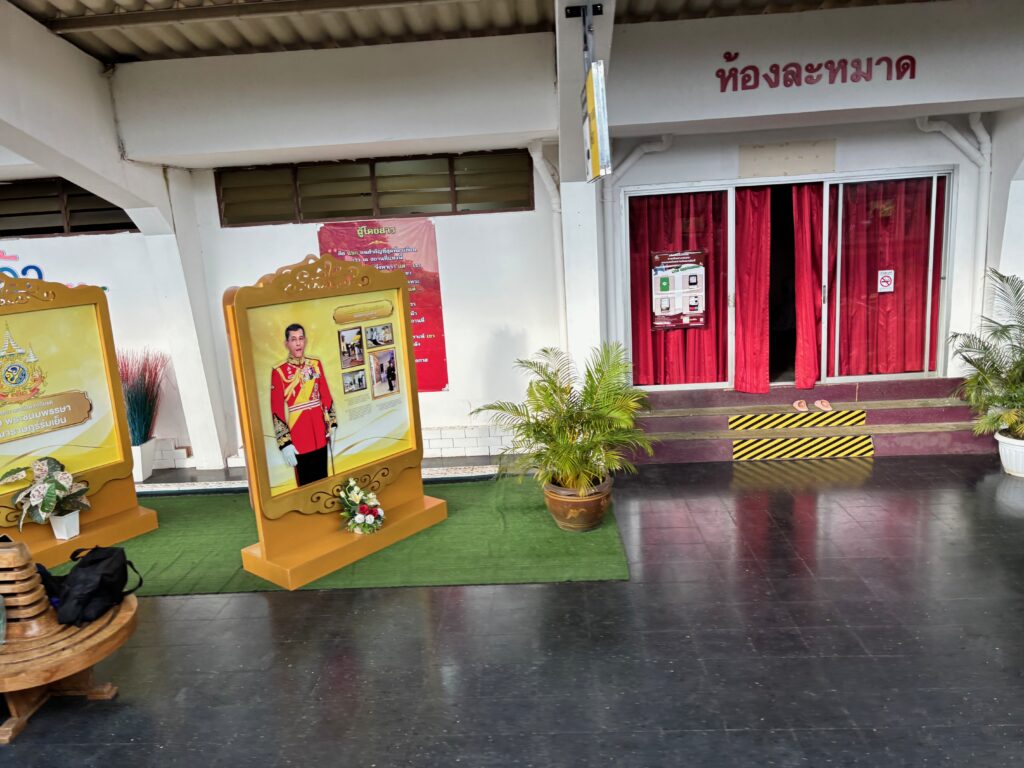
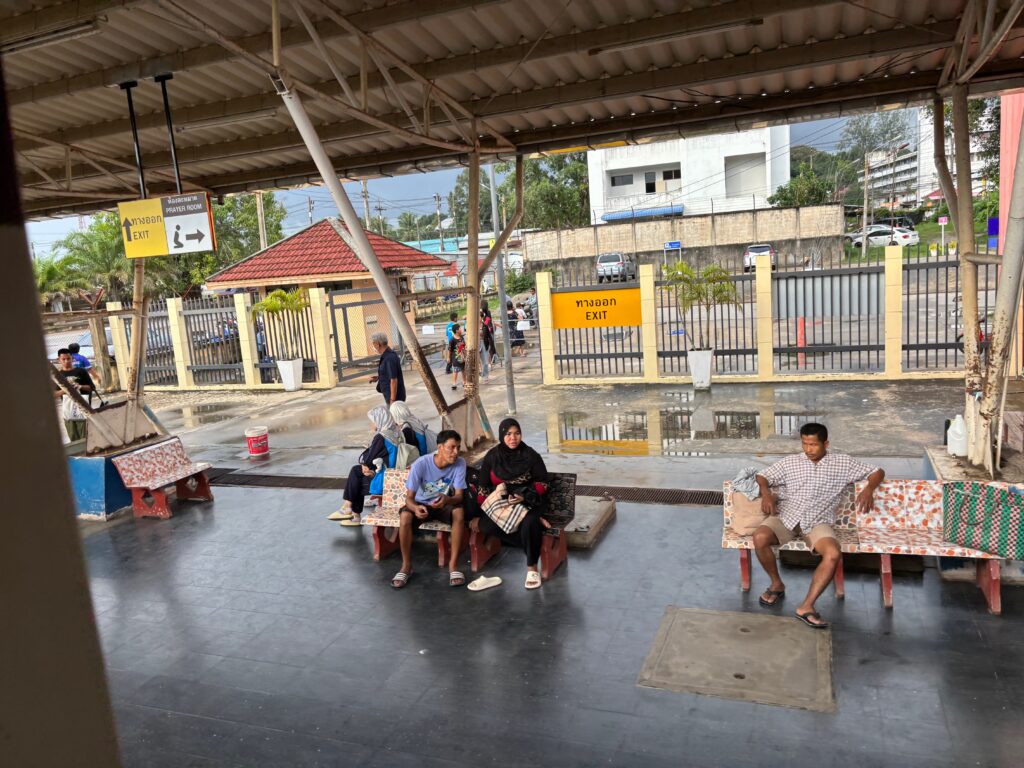
Arriving in Hat Yai: Completing the Route
As we approached Hat Yai, I was fascinated by the sight of the other railway line from Malaysia, the one coming up from Padang Besar. The two routes ran parallel for a while before merging. Having previously traveled on that West Coast route, seeing them join felt symbolic—I have now completed the full journey from Kuala Lumpur to Thailand via both the West and East Coast railway lines.
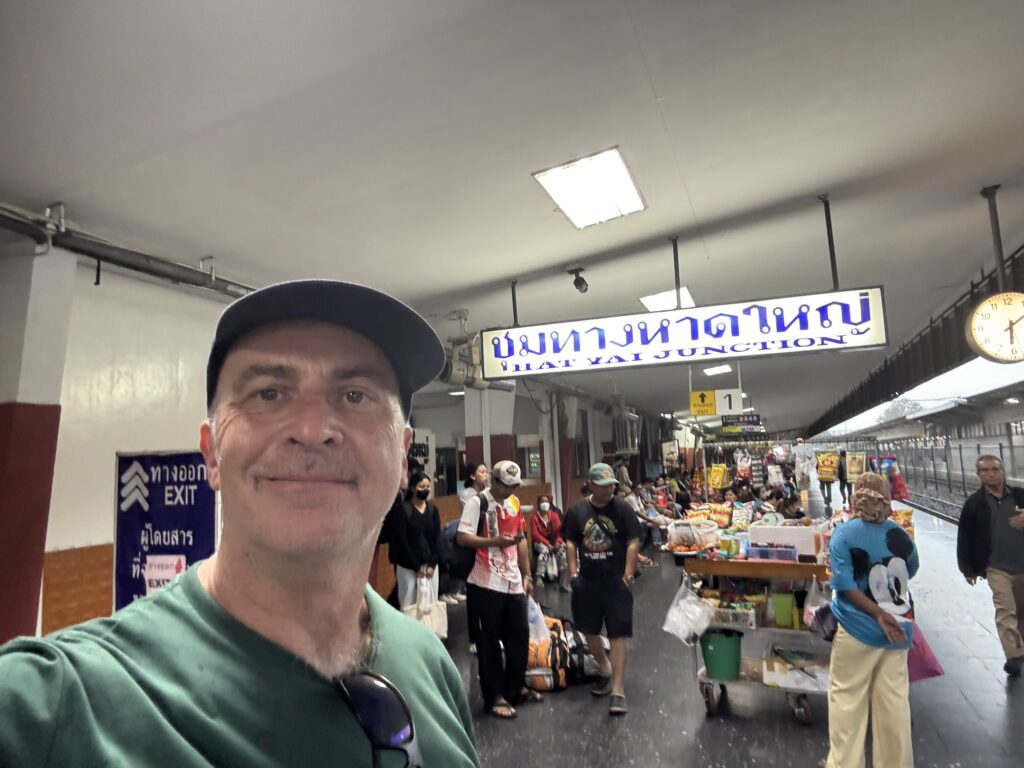
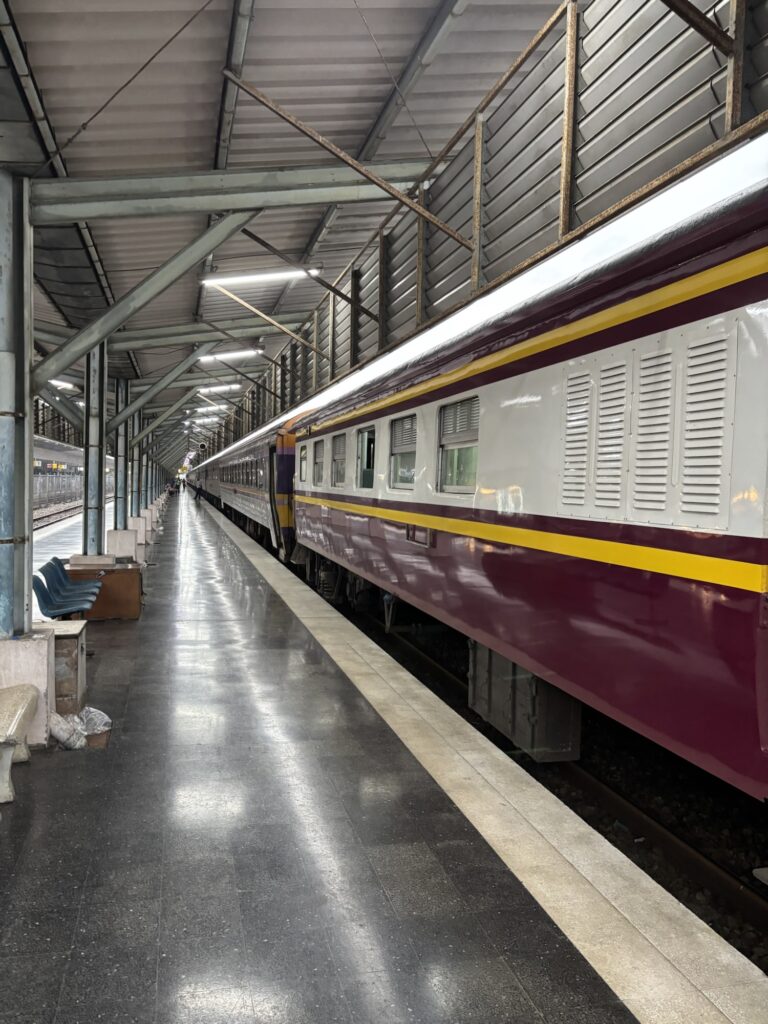
As I stepped outside of the Hat Yai railway station, a motorbike taxi driver approached me and, in English, asked if I wanted a ride. I replied in Thai. He laughed and turned to his friends, exclaiming in Thai, “Listen to the foreigner! He thinks he can speak Thai!” I responded, “Yes, I do understand Thai.” He looked at me, surprised. “You understand Thai?” “I understand Thai,” I repeated. “And I have chosen to walk instead of taking a motorbike taxi.” His reaction was a mix of bemusement and embarrassment, and I continued on my way, chuckling at the exchange. It wasn’t the warmest welcome to Hat Yai, but it wasn’t unfriendly either. It was just another moment in the chaotic and amusing world of travel. After all, that’s life in a big city.
And I had finished riding the entire Thai railway system and survived one of the most dangerous railway routes in the world! I felt quite exhilarated while wrestling with what I had seen and experienced! Despite the ongoing violence in the southern provinces, this obscure route had been one of beauty combined with deep the warmth (from almost all) of the people I met. These were was a striking contrast to the region’s troubled history, offering a side of Thailand rarely seen in headlines. I feel fortunate to have travelled this route. Yes, I made it safely—and I loved every moment of it. But I am acutely aware that I had the privilege of leaving. Millions of people live here, and for them, the railway is not just a journey but a necessity. Their daily lives are shaped by risk, fear, and the anxiety of ongoing violence.
Related Posts
- Malaysia’s Jungle Railway: From the Heart of the Country to the Sea
- How to get around: Exploring Malaysian and Kuala Lumpur Transport Networks
- Riding the Big Trains: Sensational Rail Journeys Through Wales/ Cymru
- Easily Exploring Morocco by Train
- Bucket List Check: 900mi By Train from Kuala Lumpur to Bangkok


Great post from a place you don’t see many trip reports from. I am sharing it in my blog on Friday Feb 14.
Nice trip report.
I am a westerner living in Narathiwat, which is also in southern Thailand. We are more isolated than Yala because there’s no train station here, so we have even fewer foreigners arrive here than Yala does.
My wife is from Yala City, and I have been and stayed there many times. The city never clicked with me though and I would recommend any visitor to Yala to head south. About 2.5 hrs drive south of Yala City is the southernmost district of Thailand, Betong. It is located in a beautiful, mountainous region and has many sights worth seeing.
thank you for sharing this was so interesting. could you share more on your experience in yala?